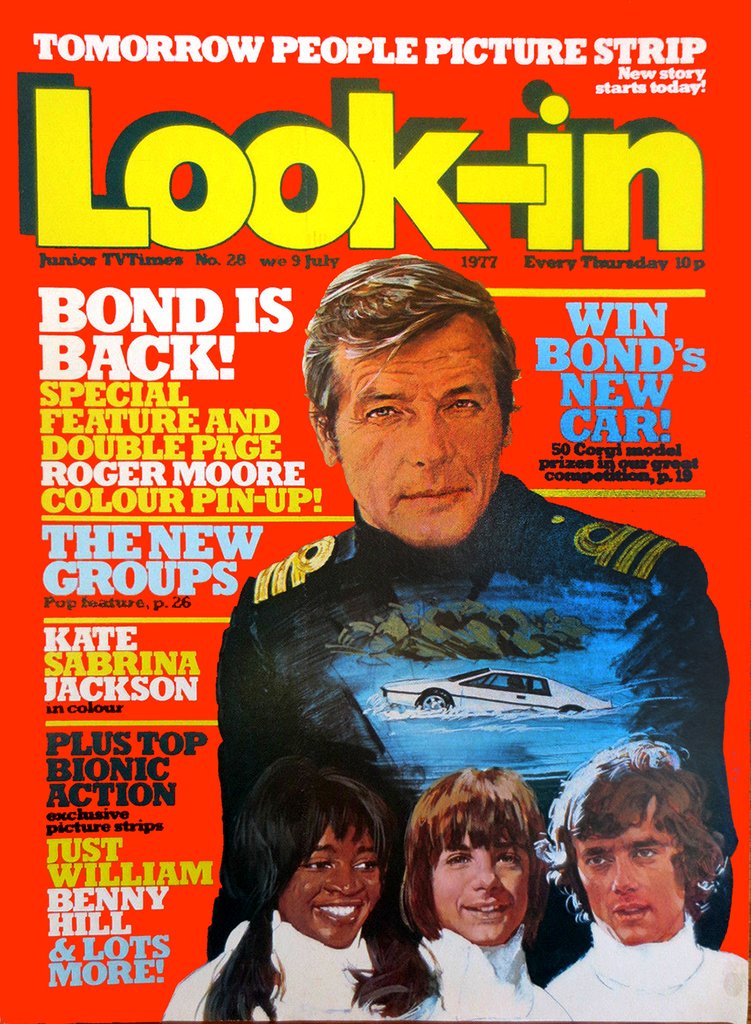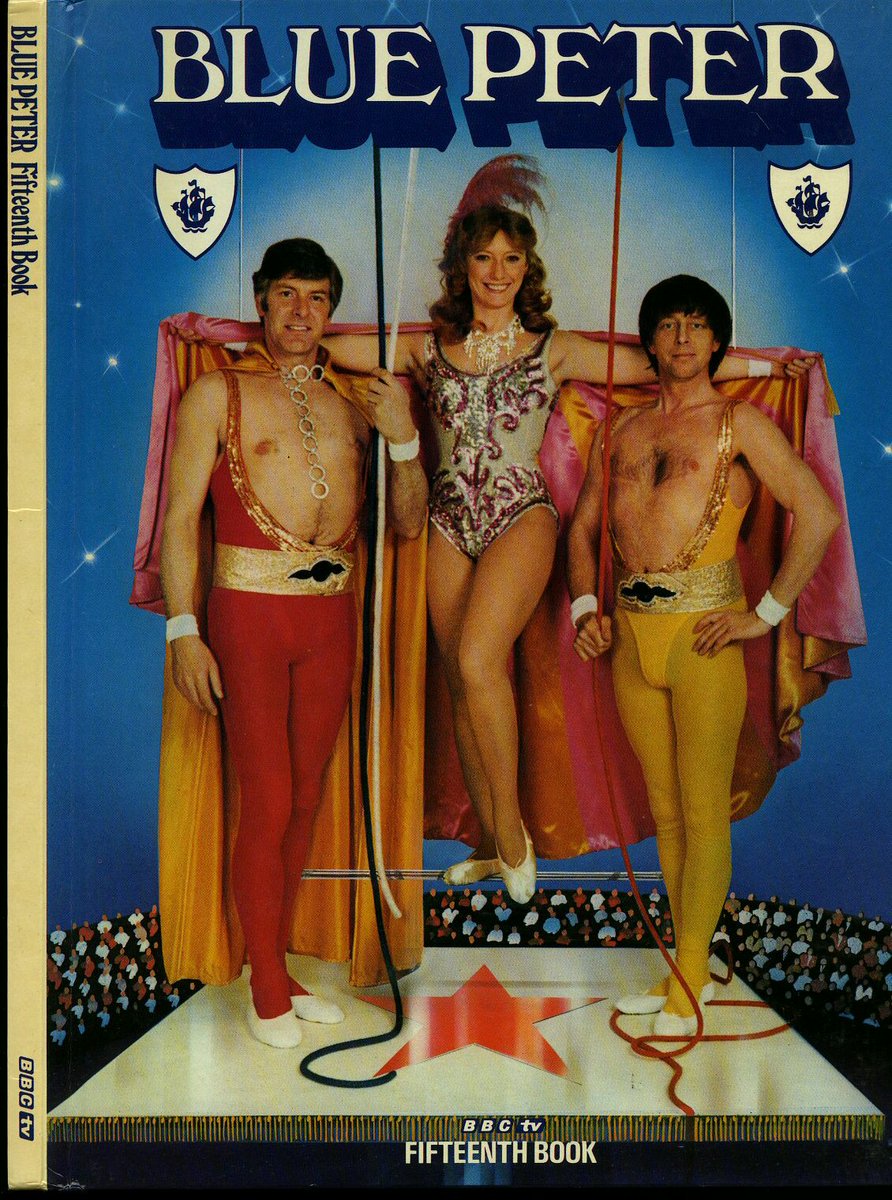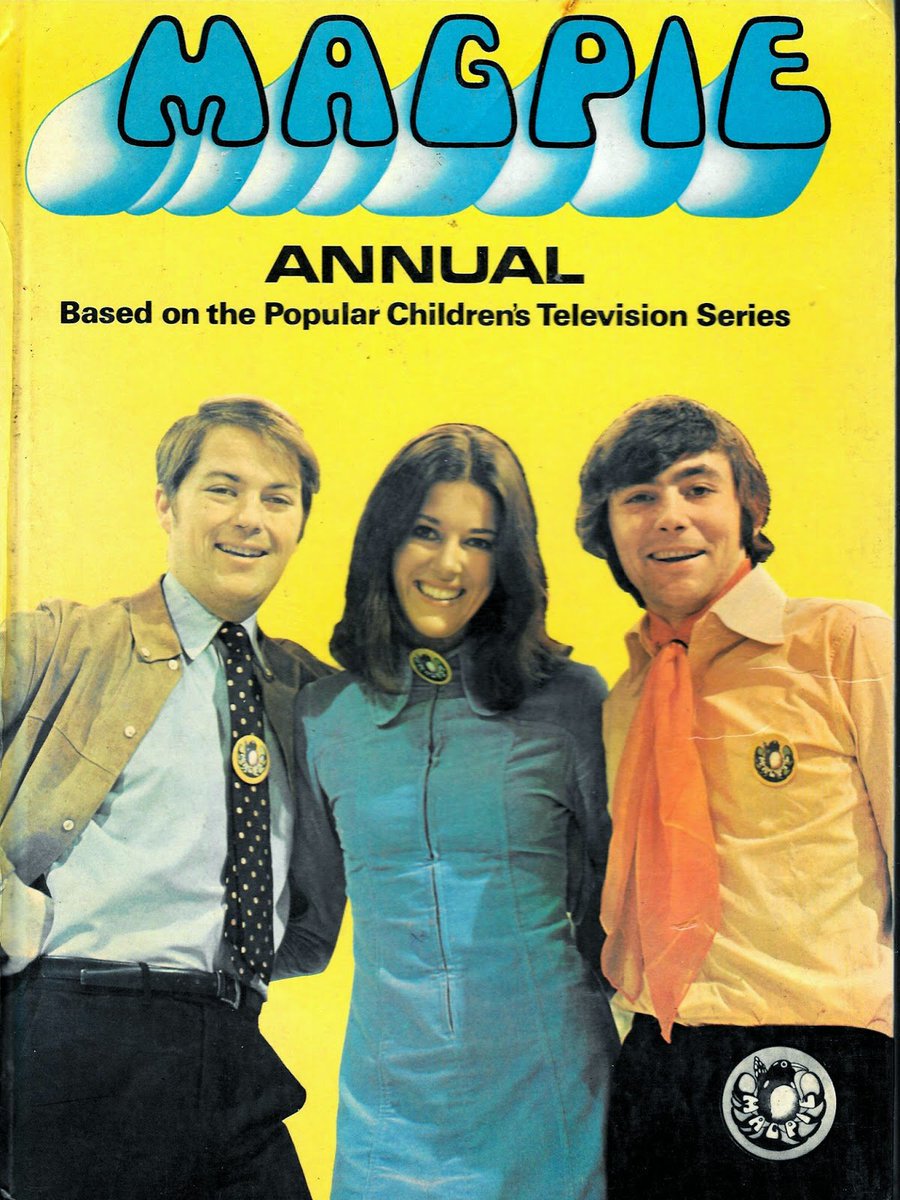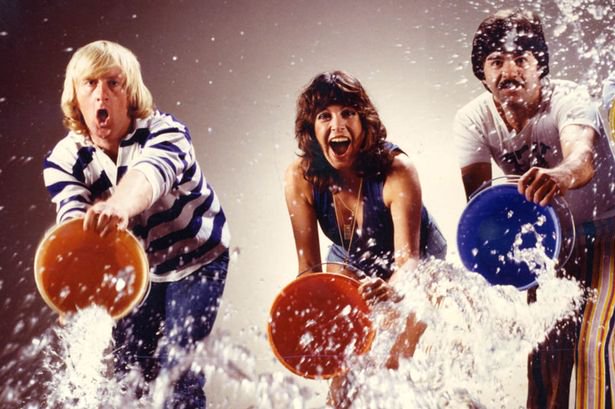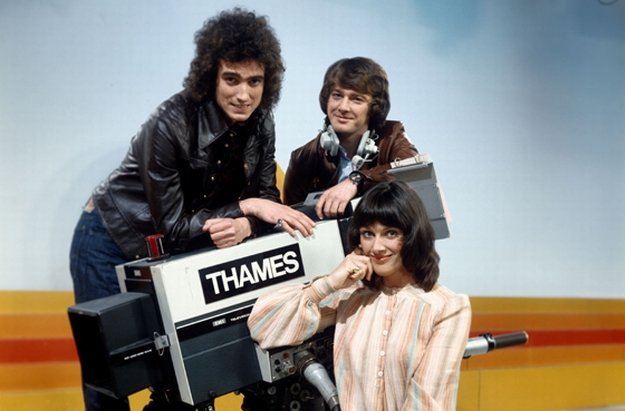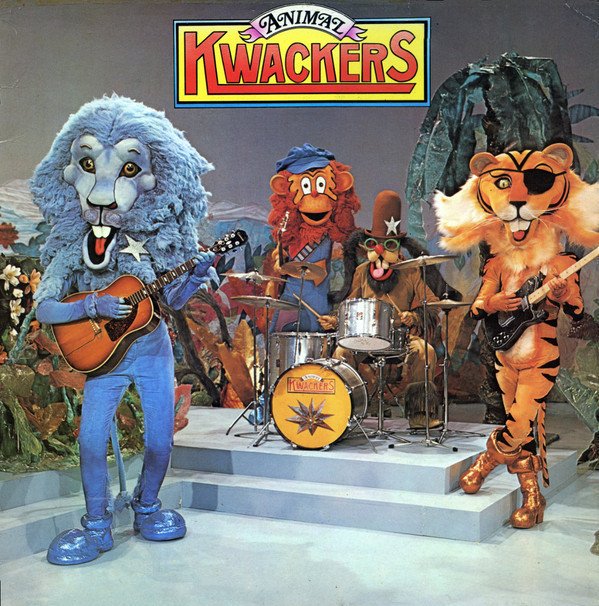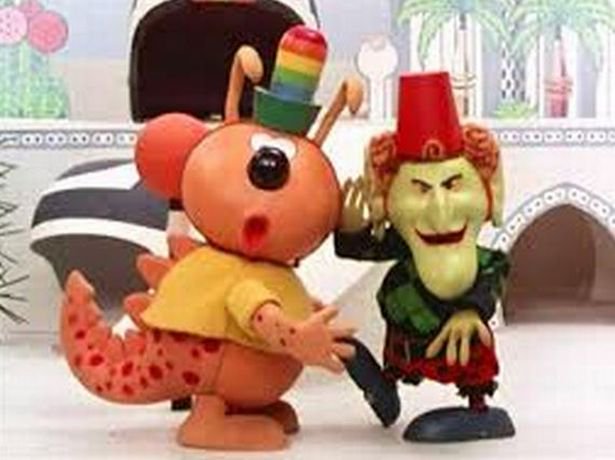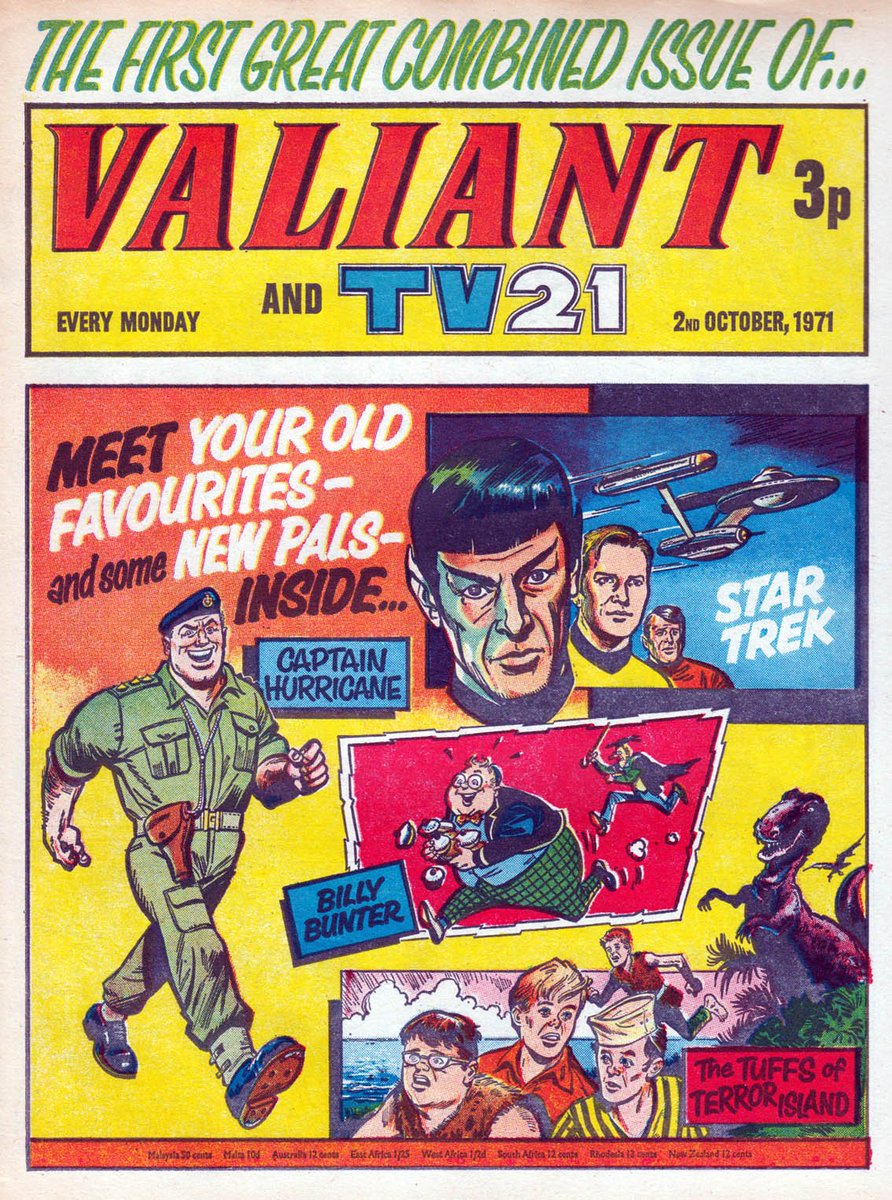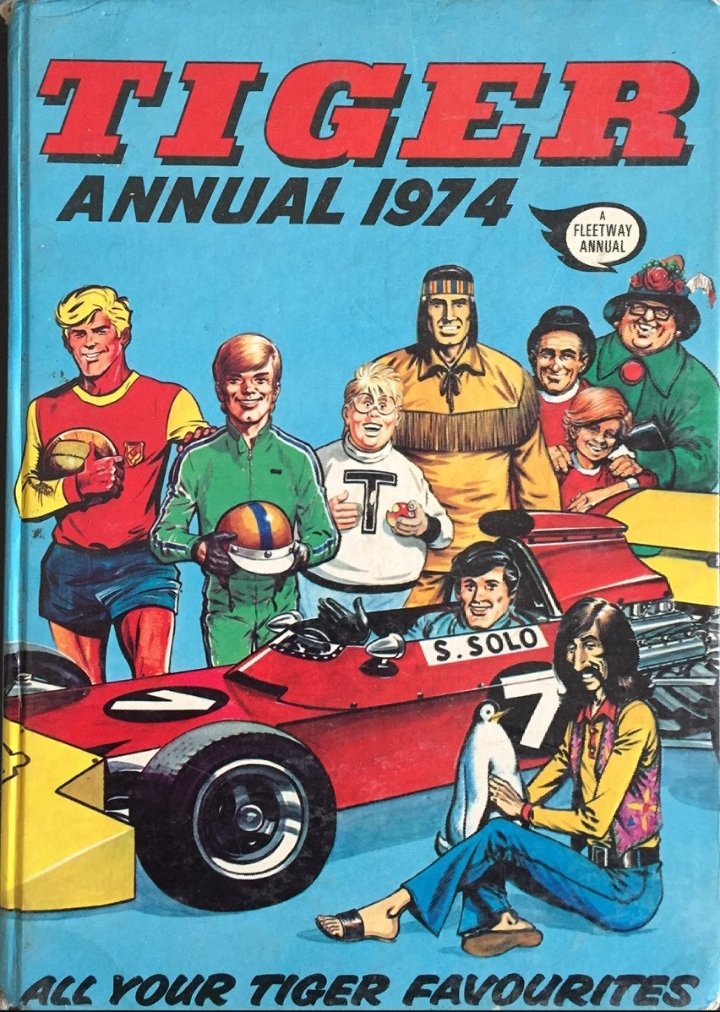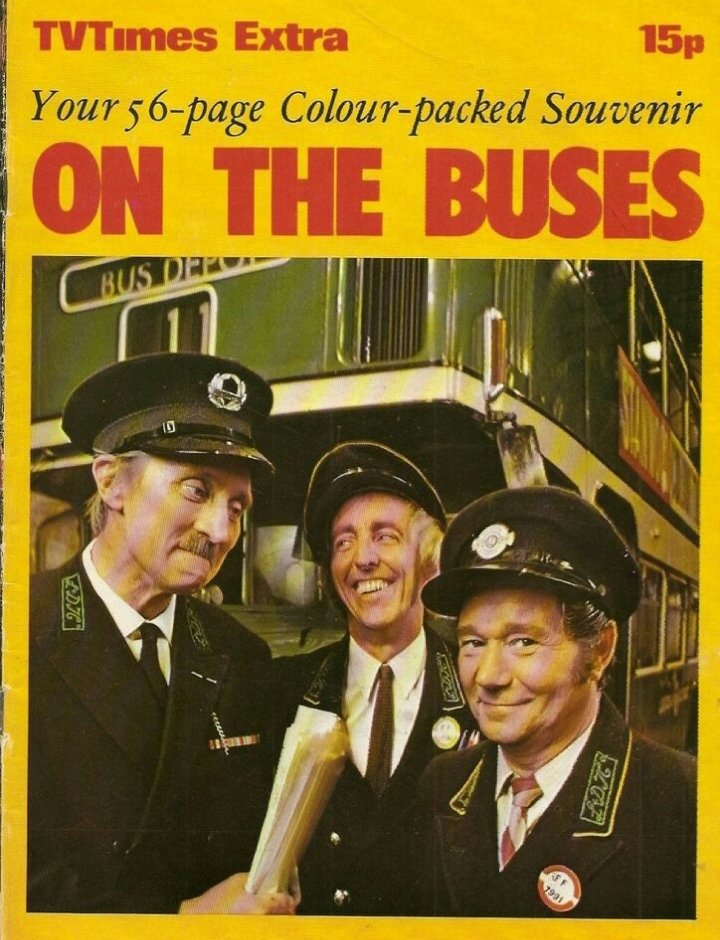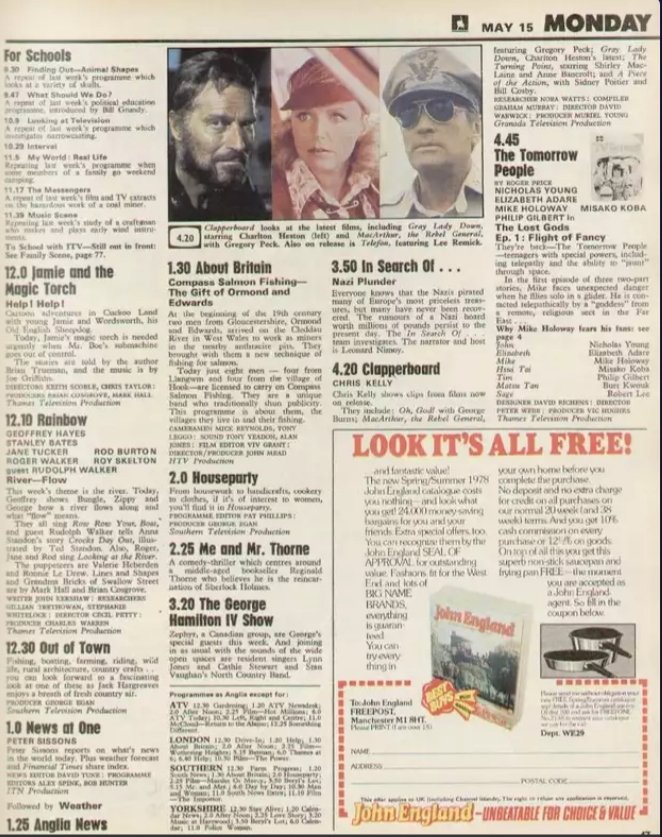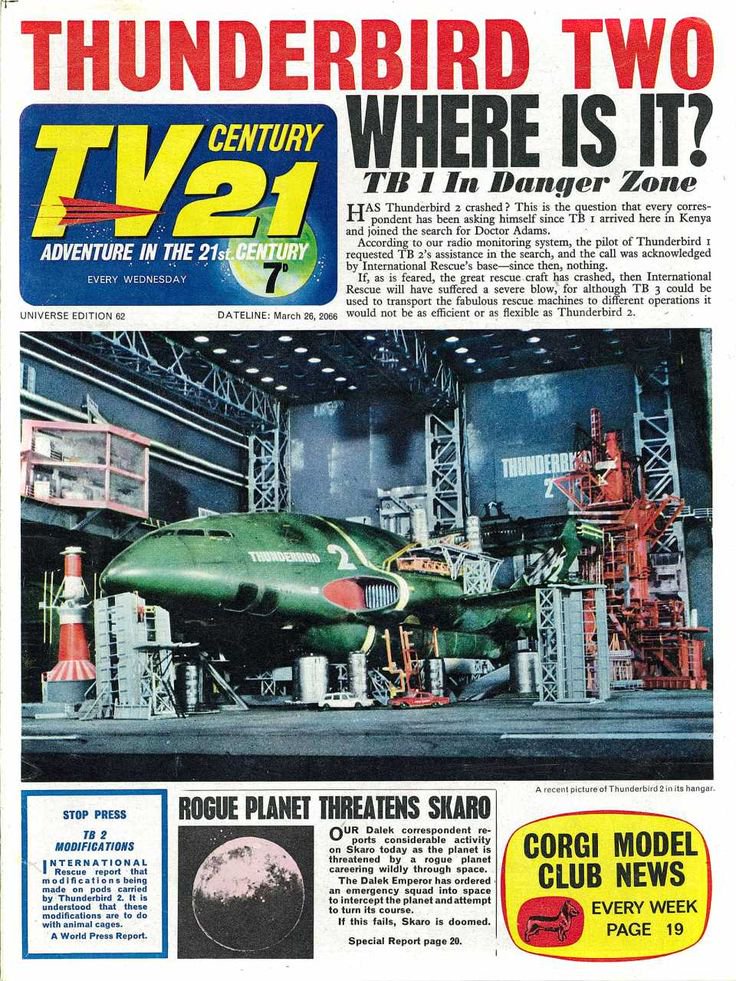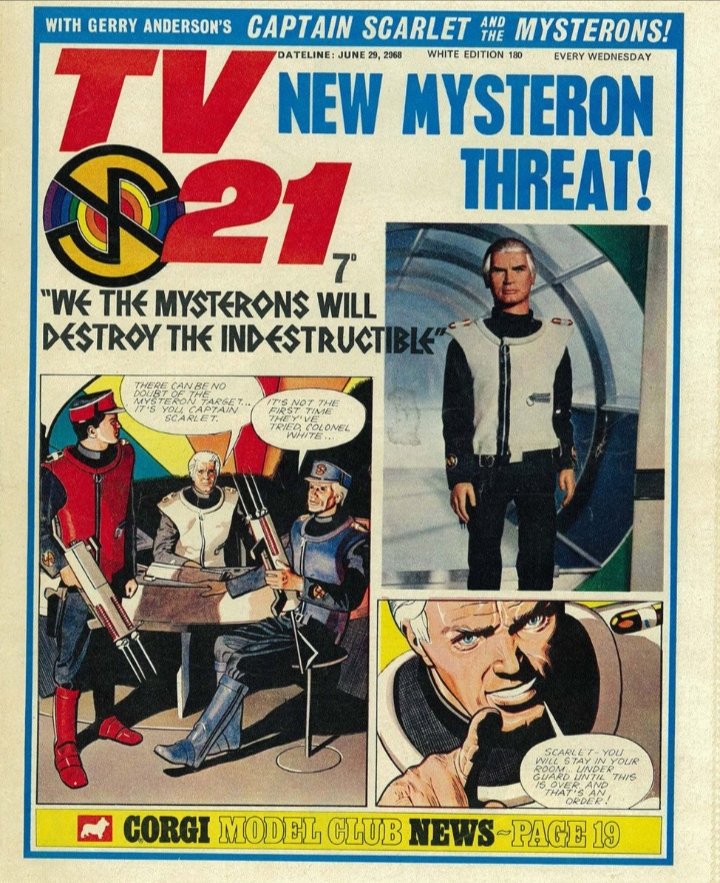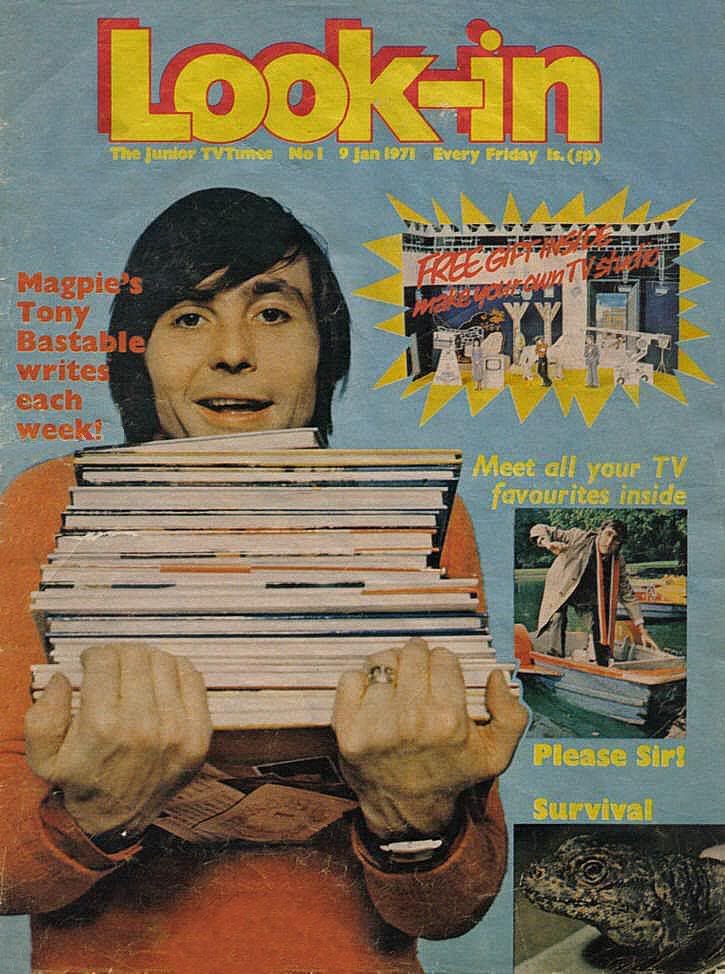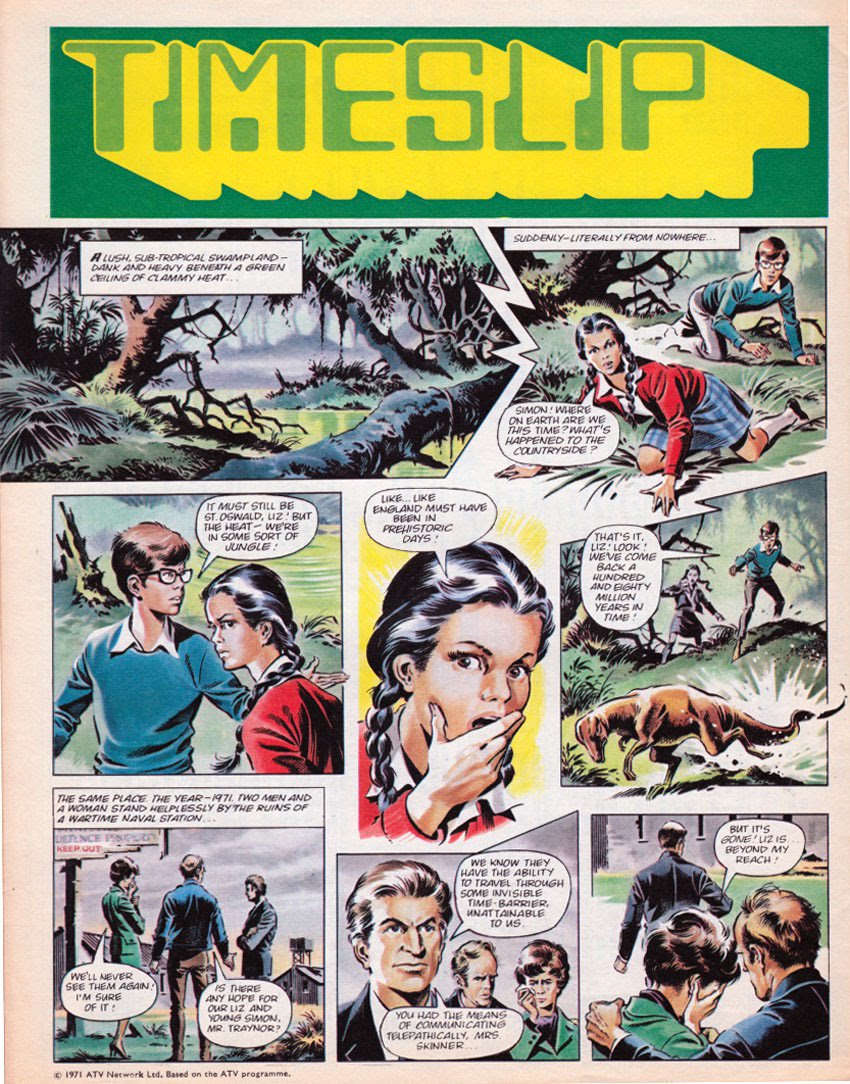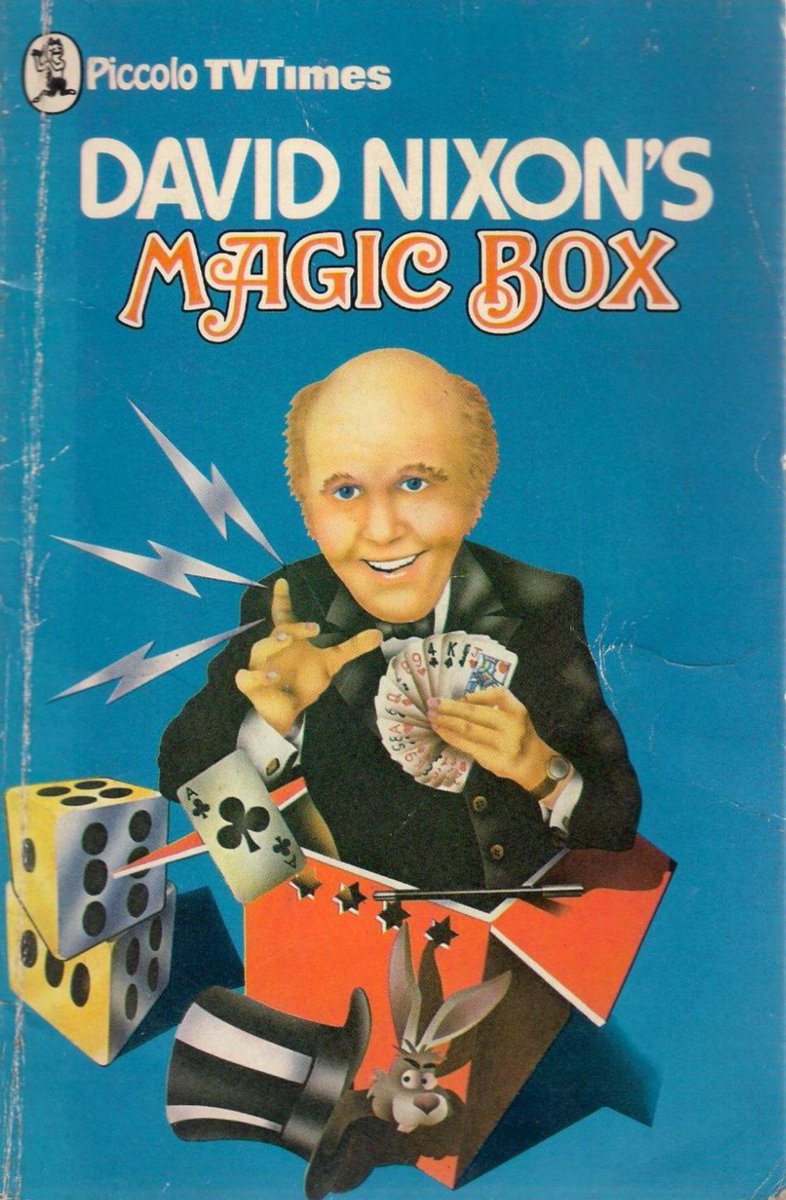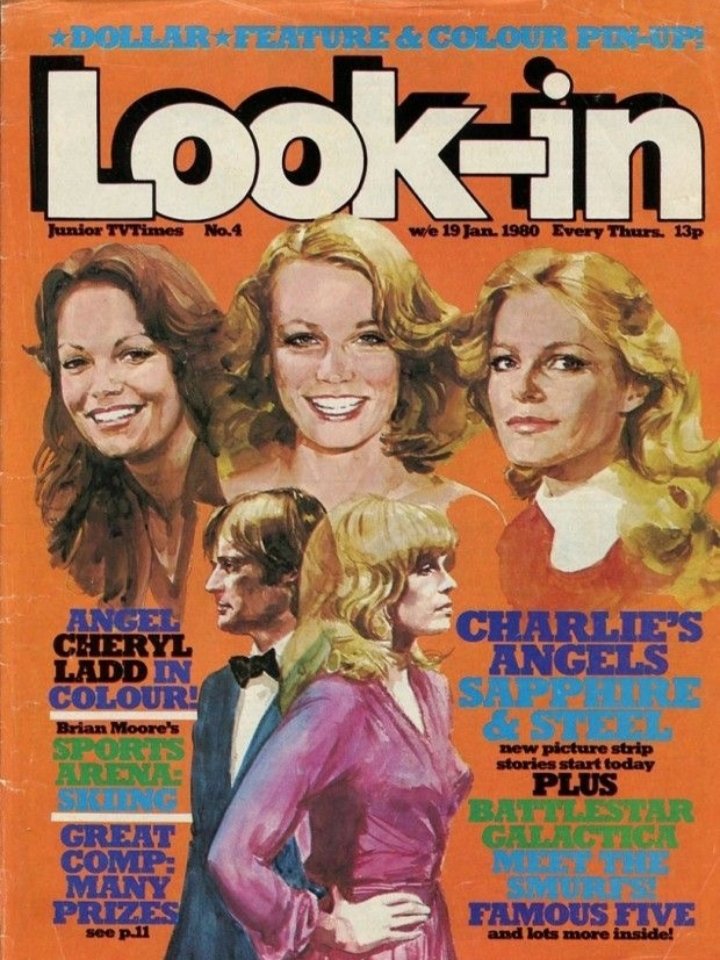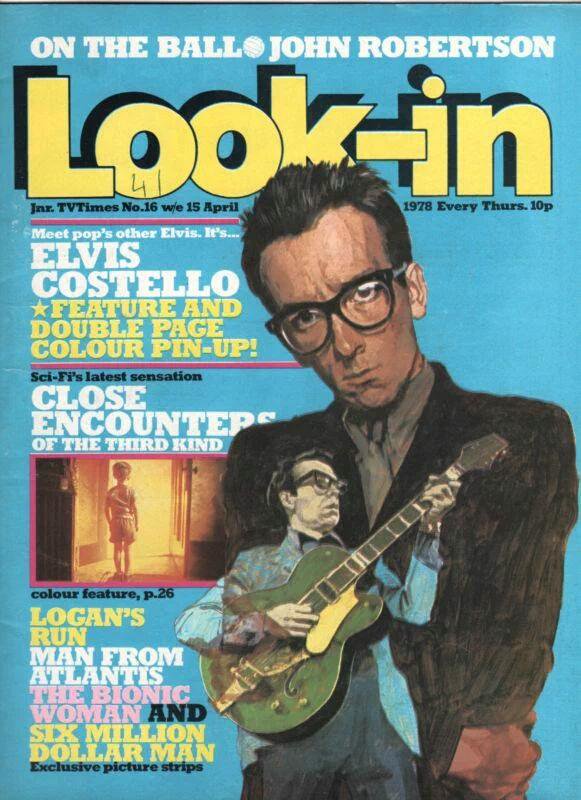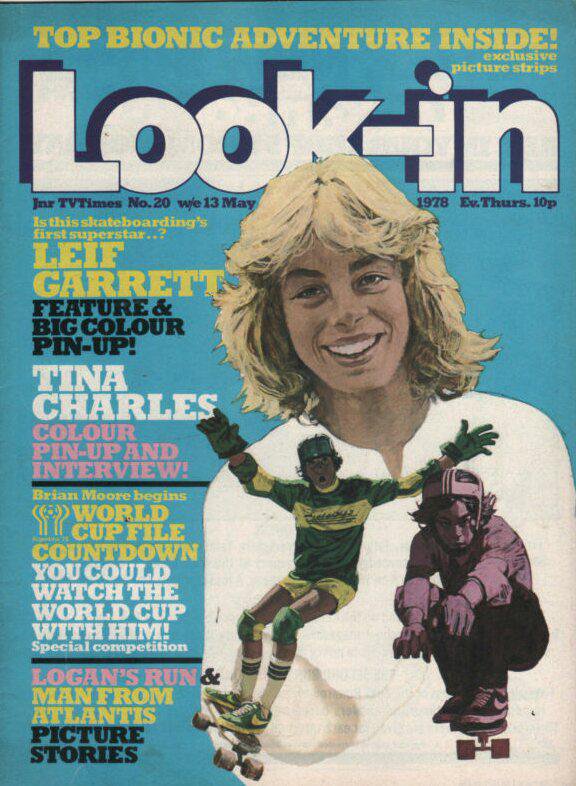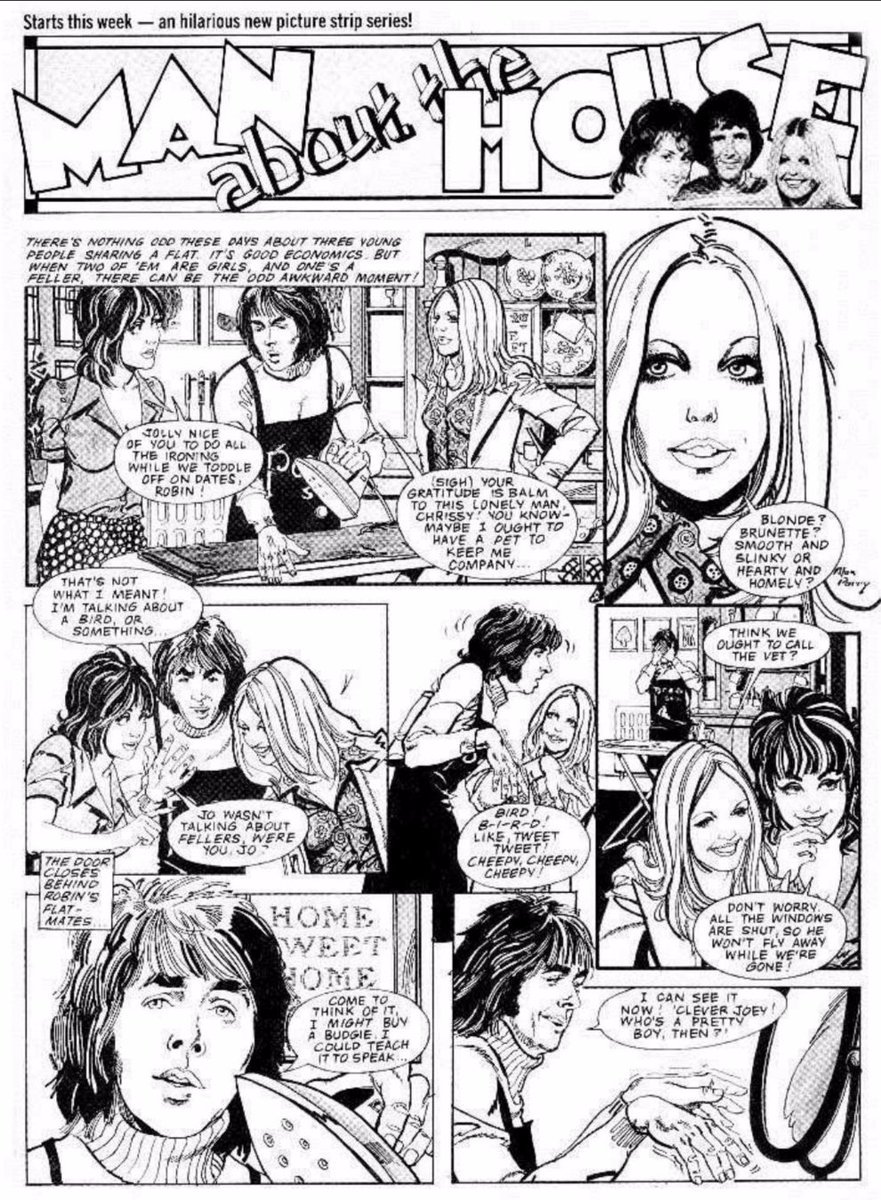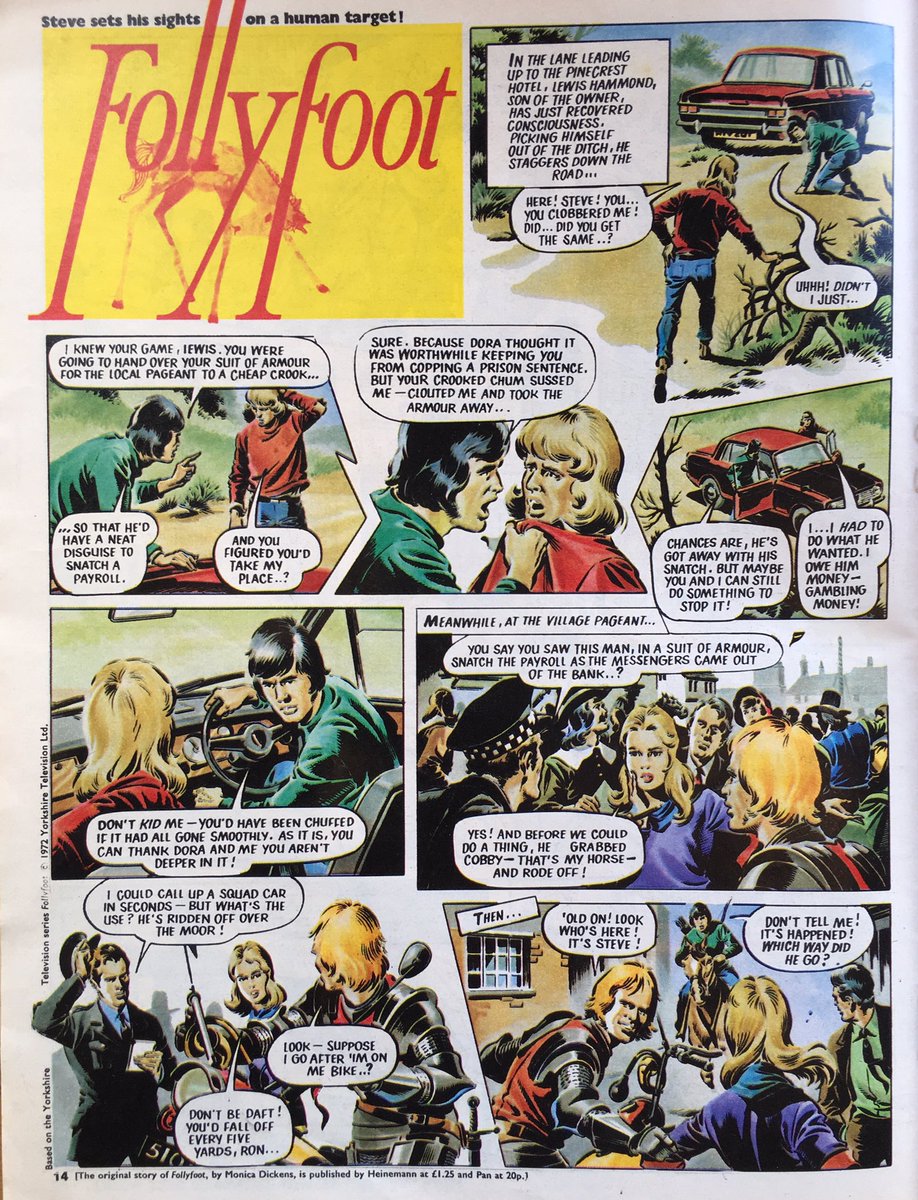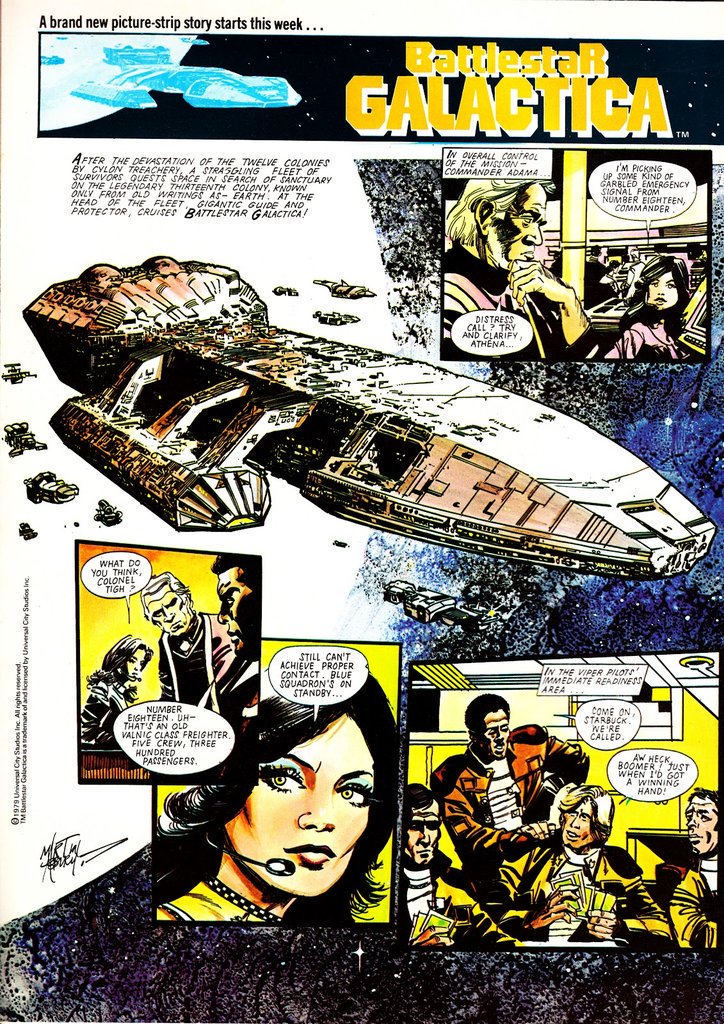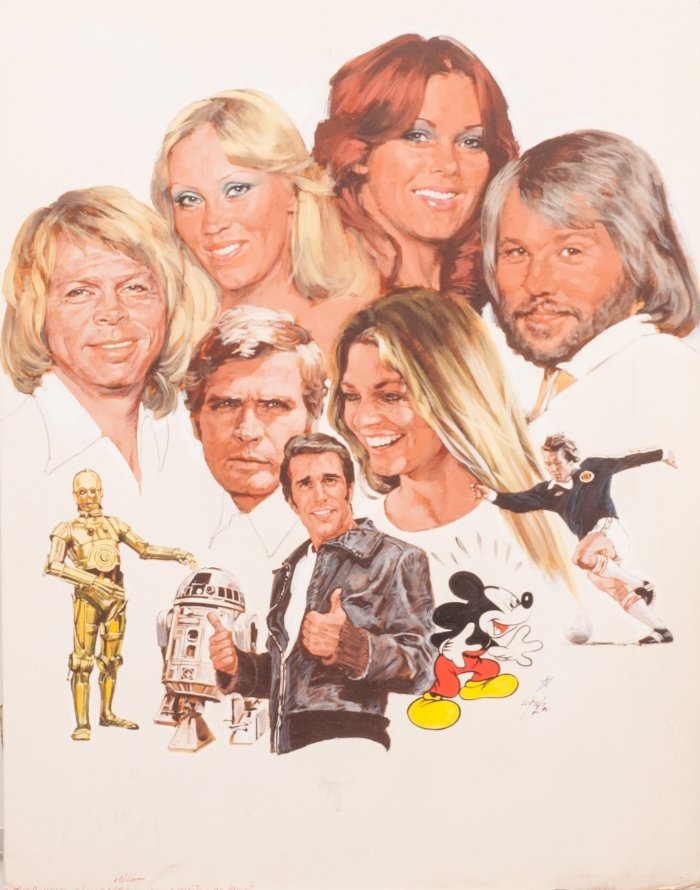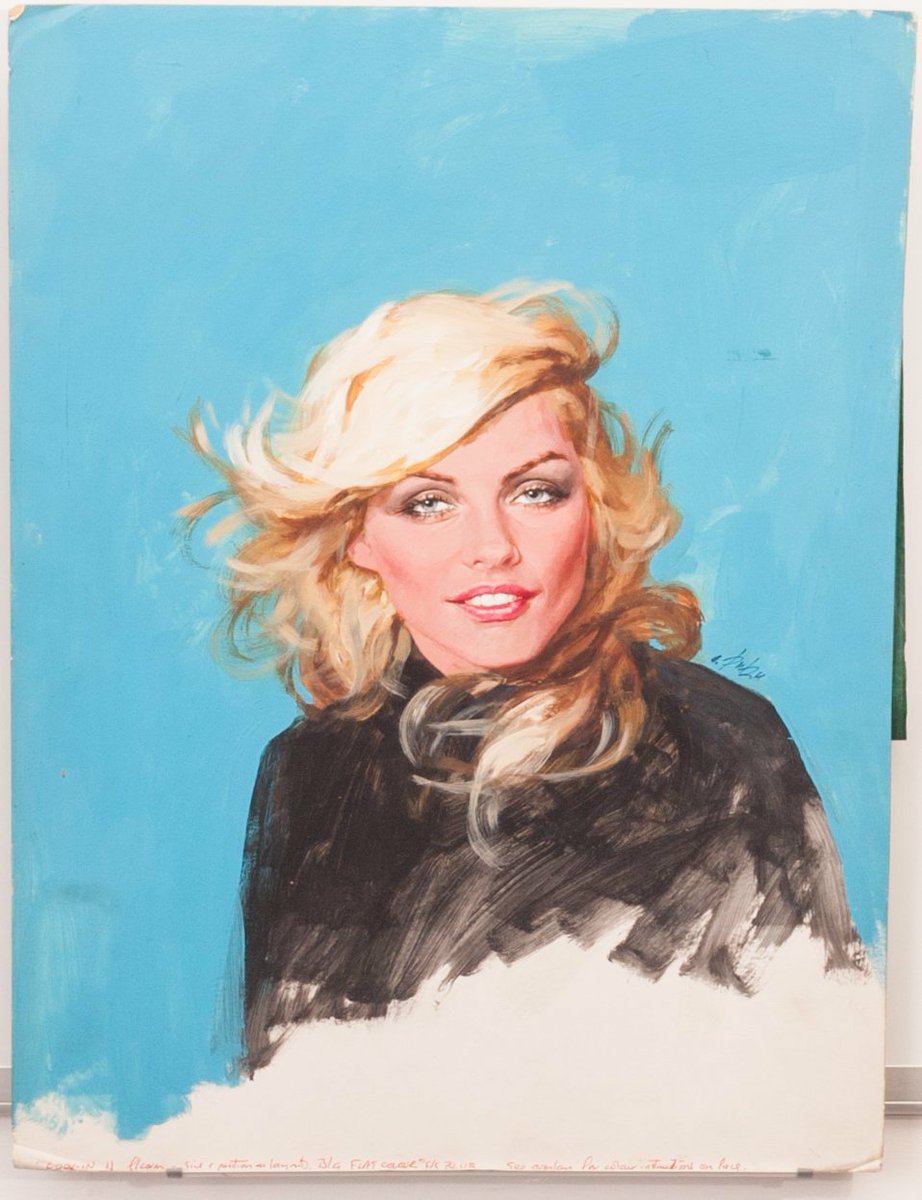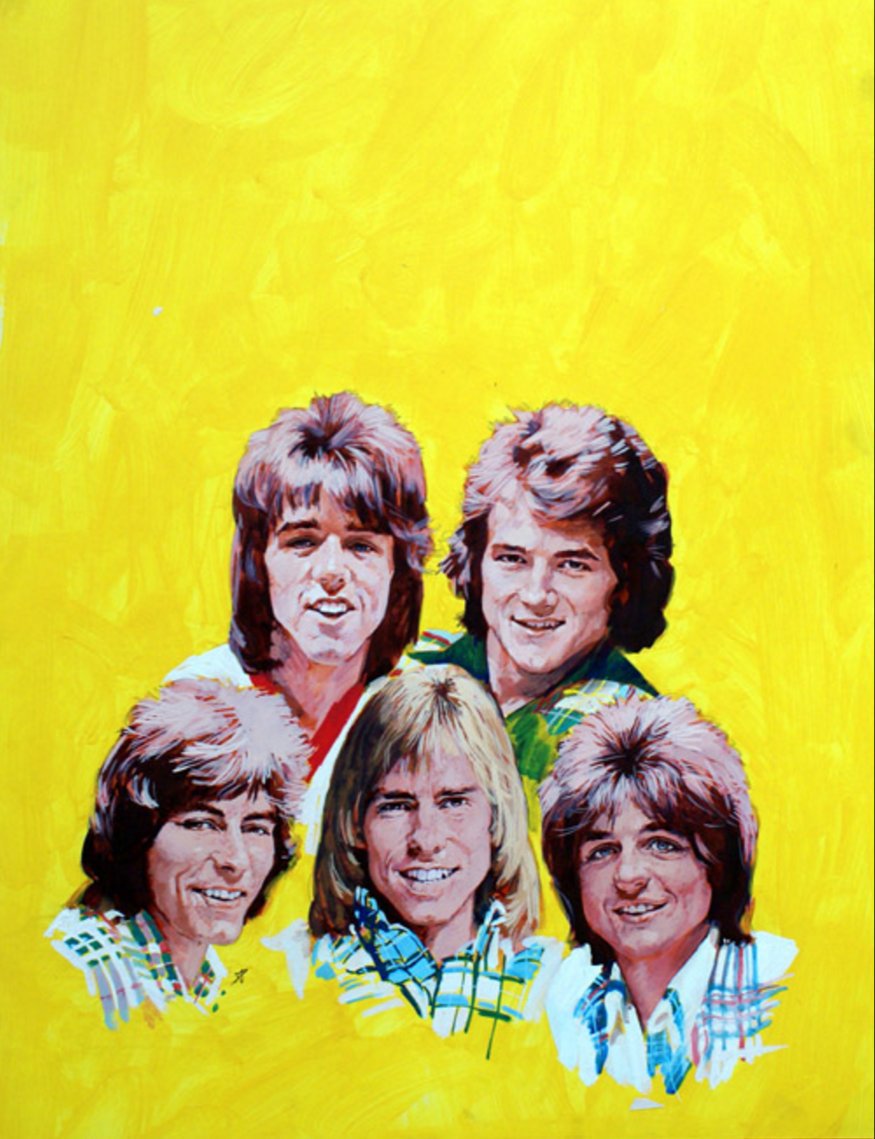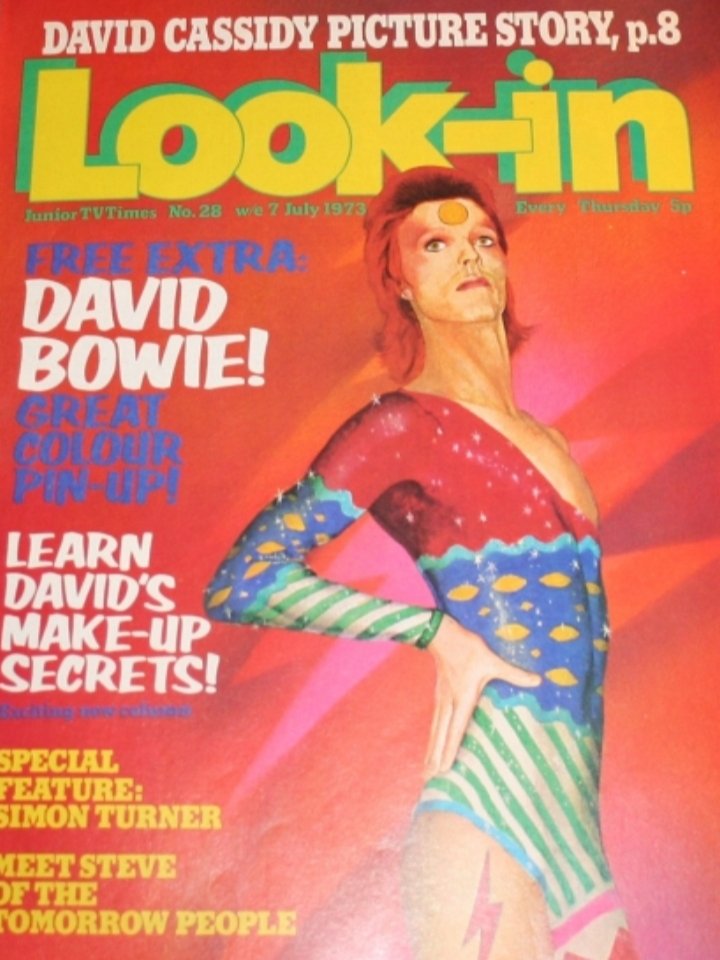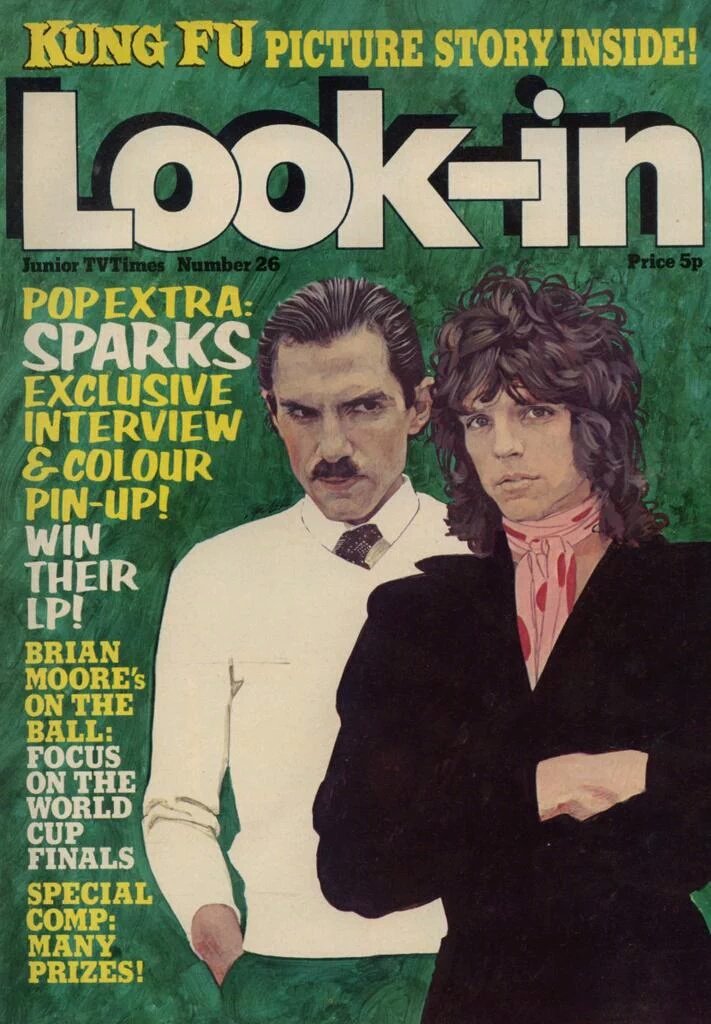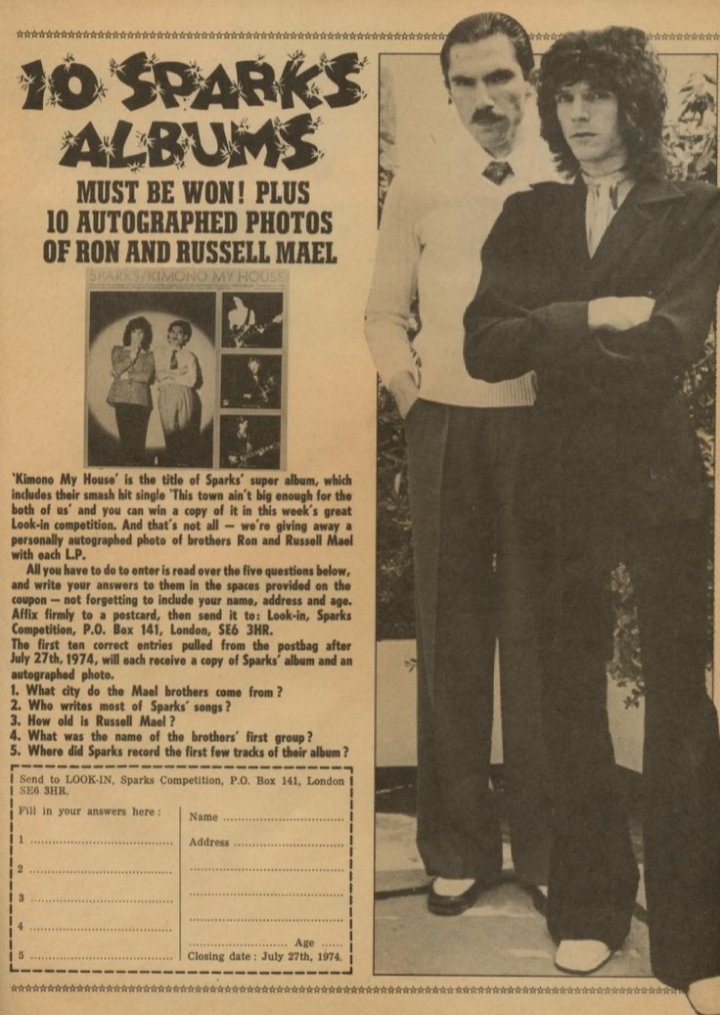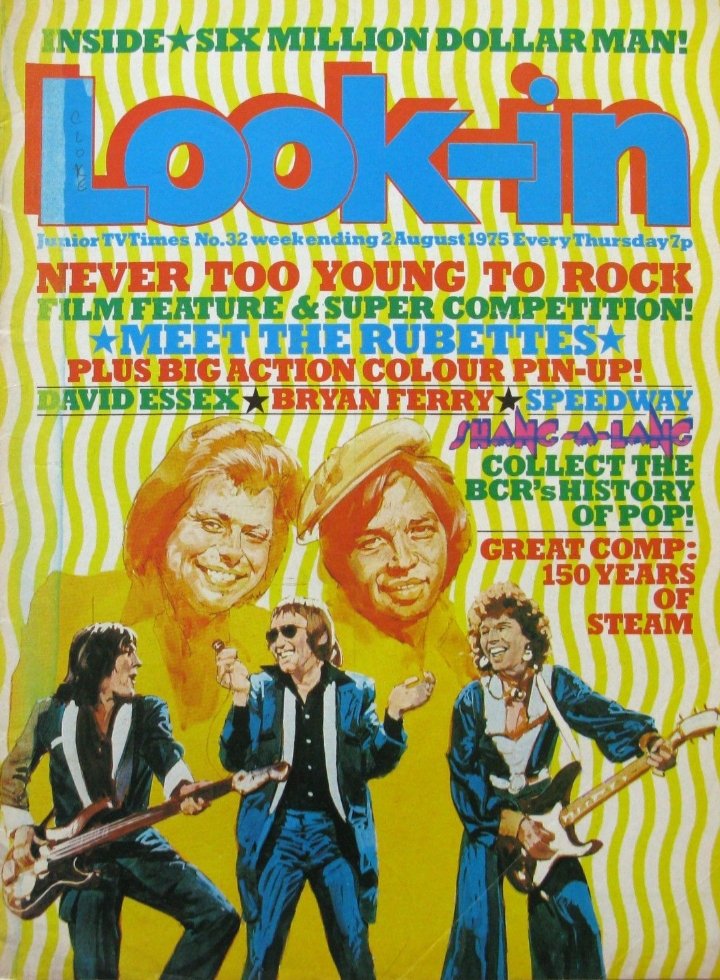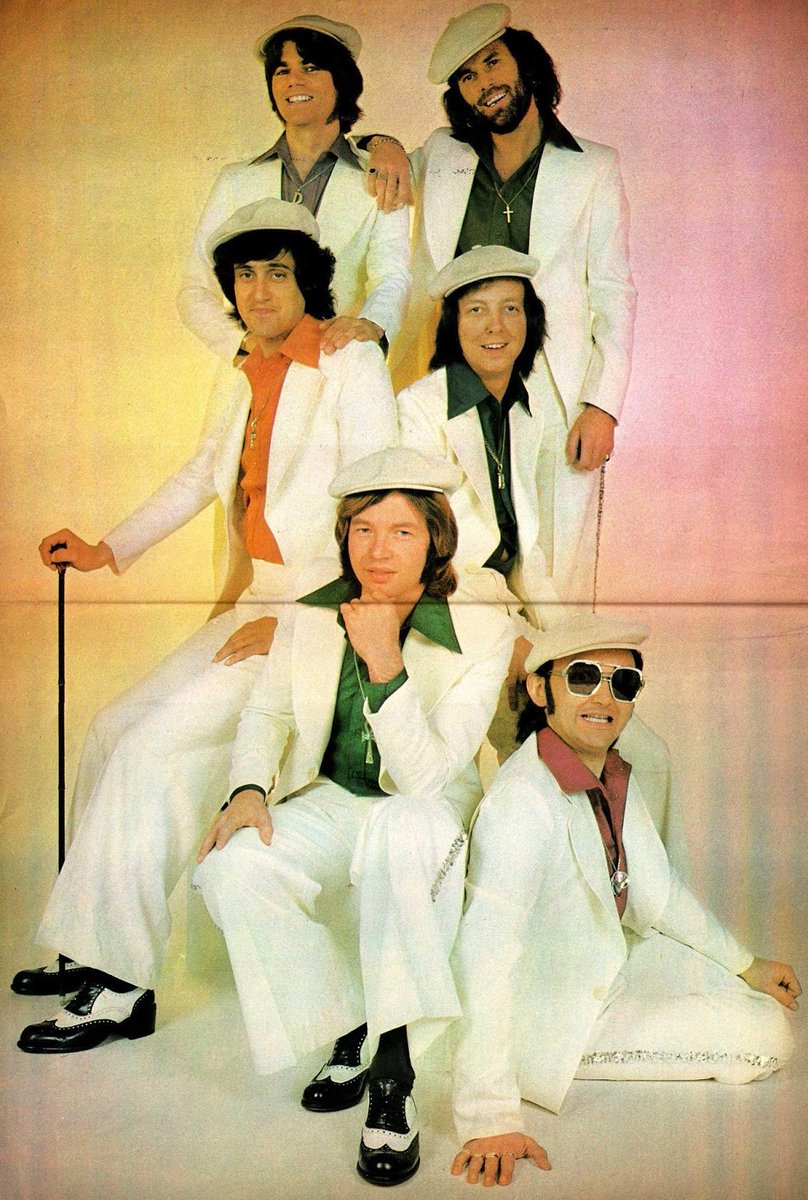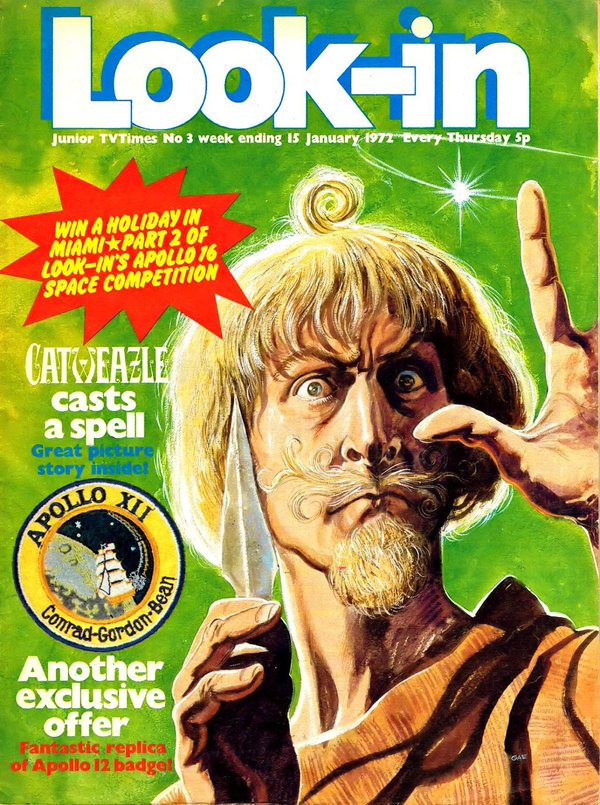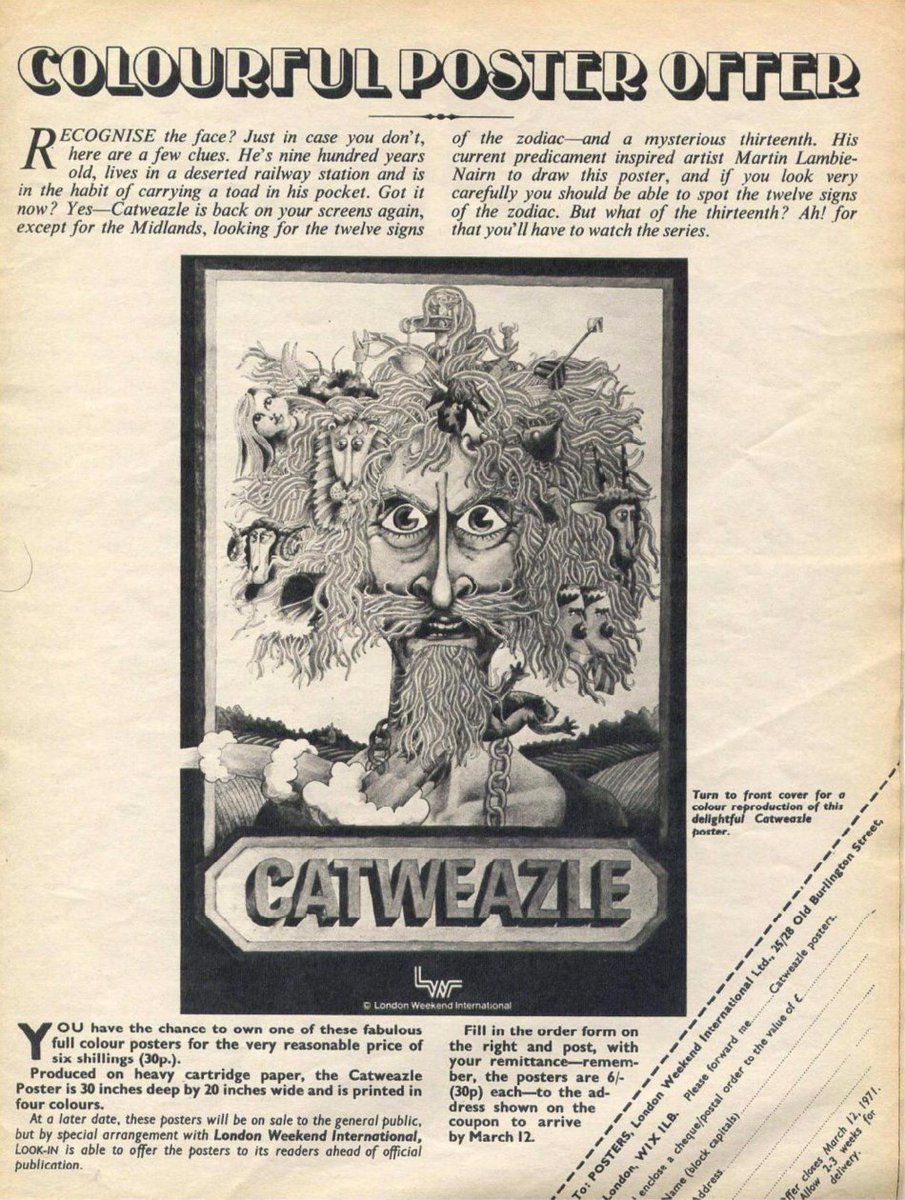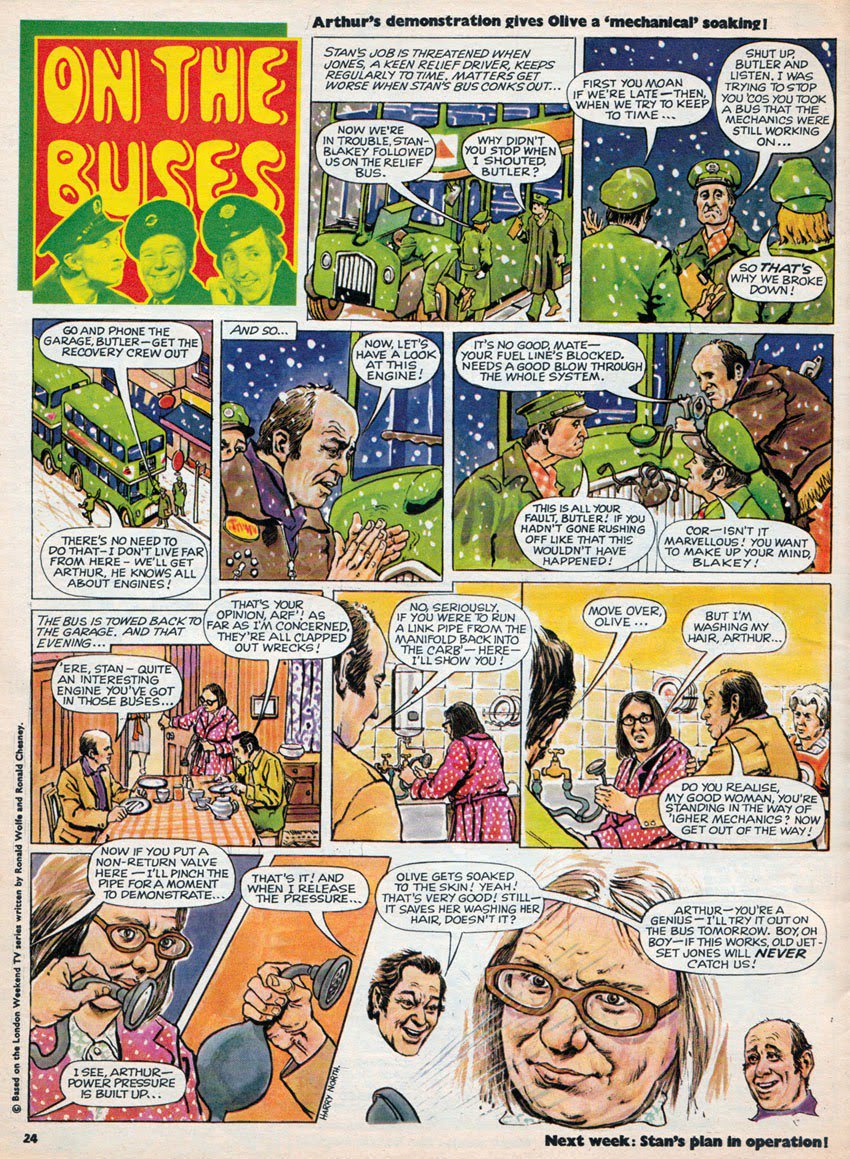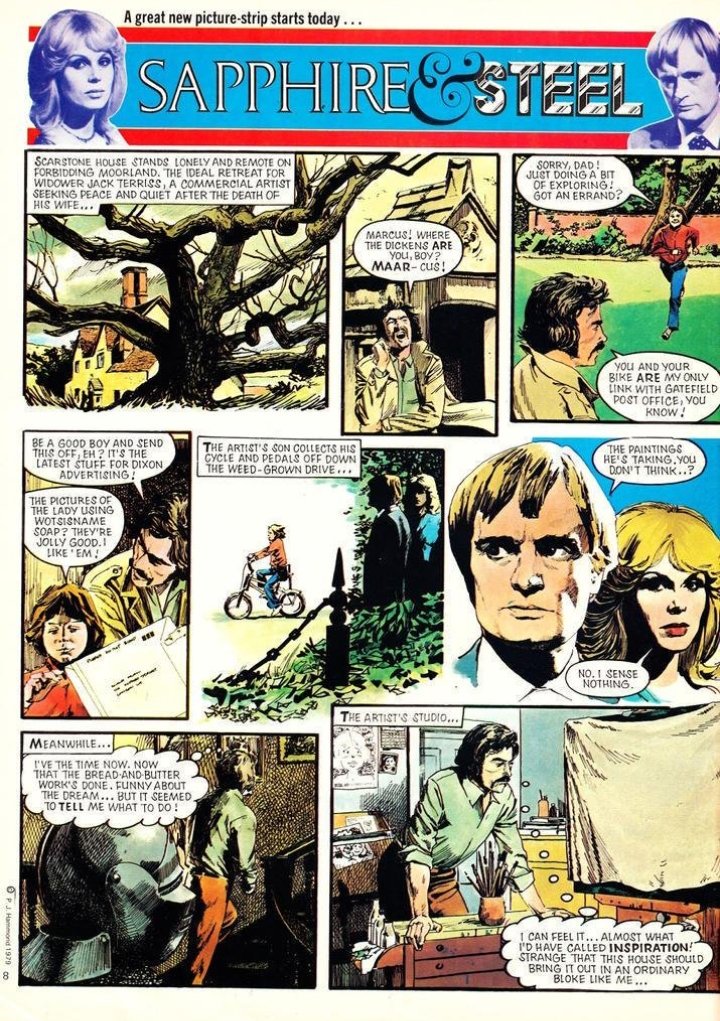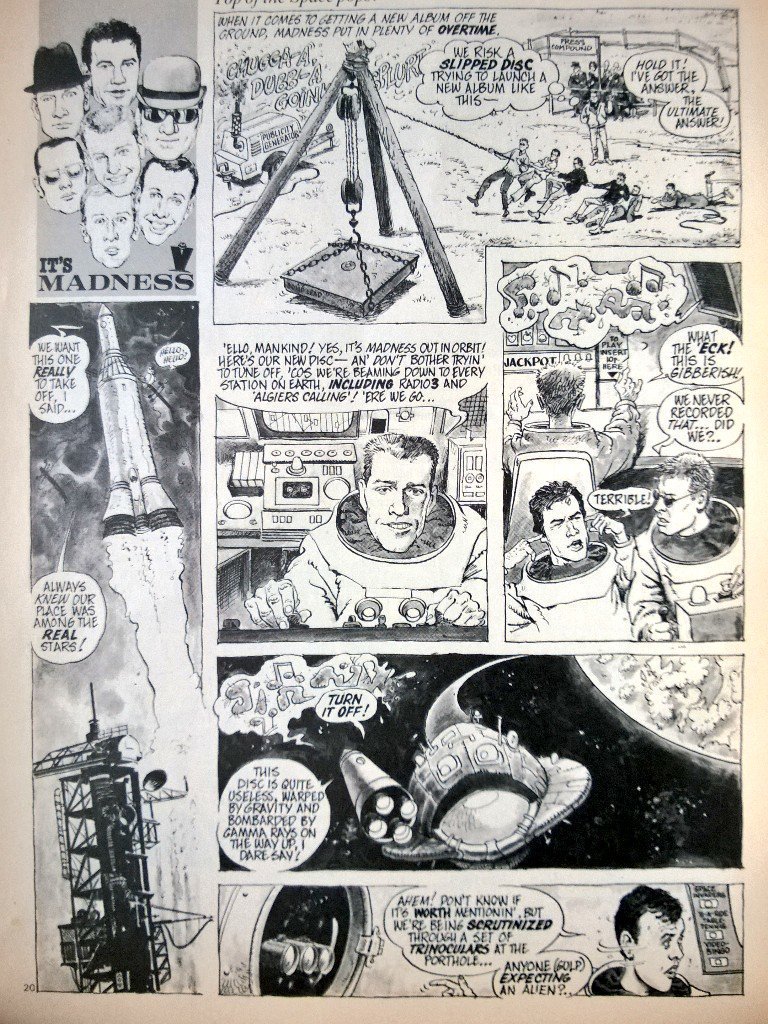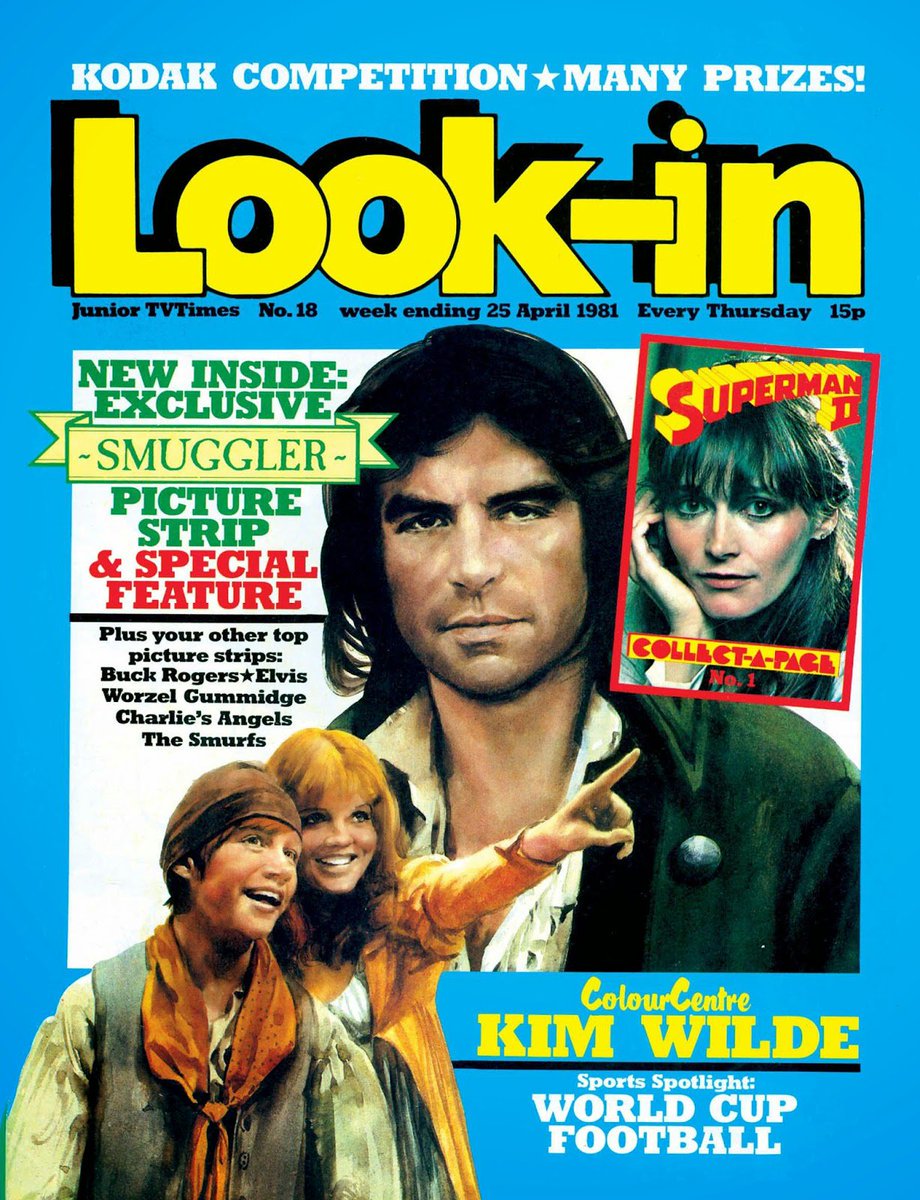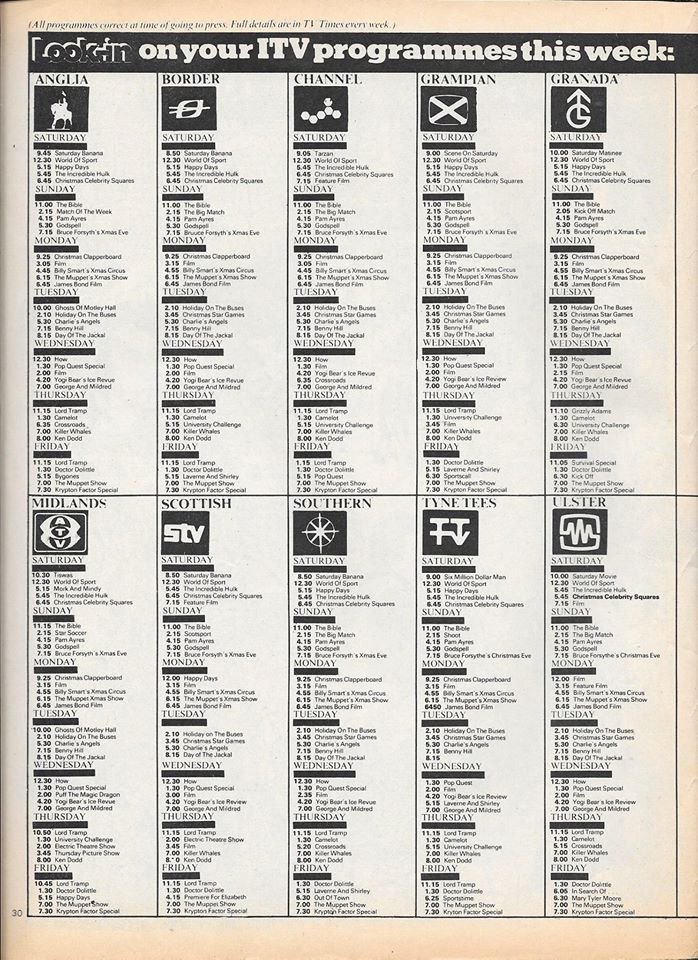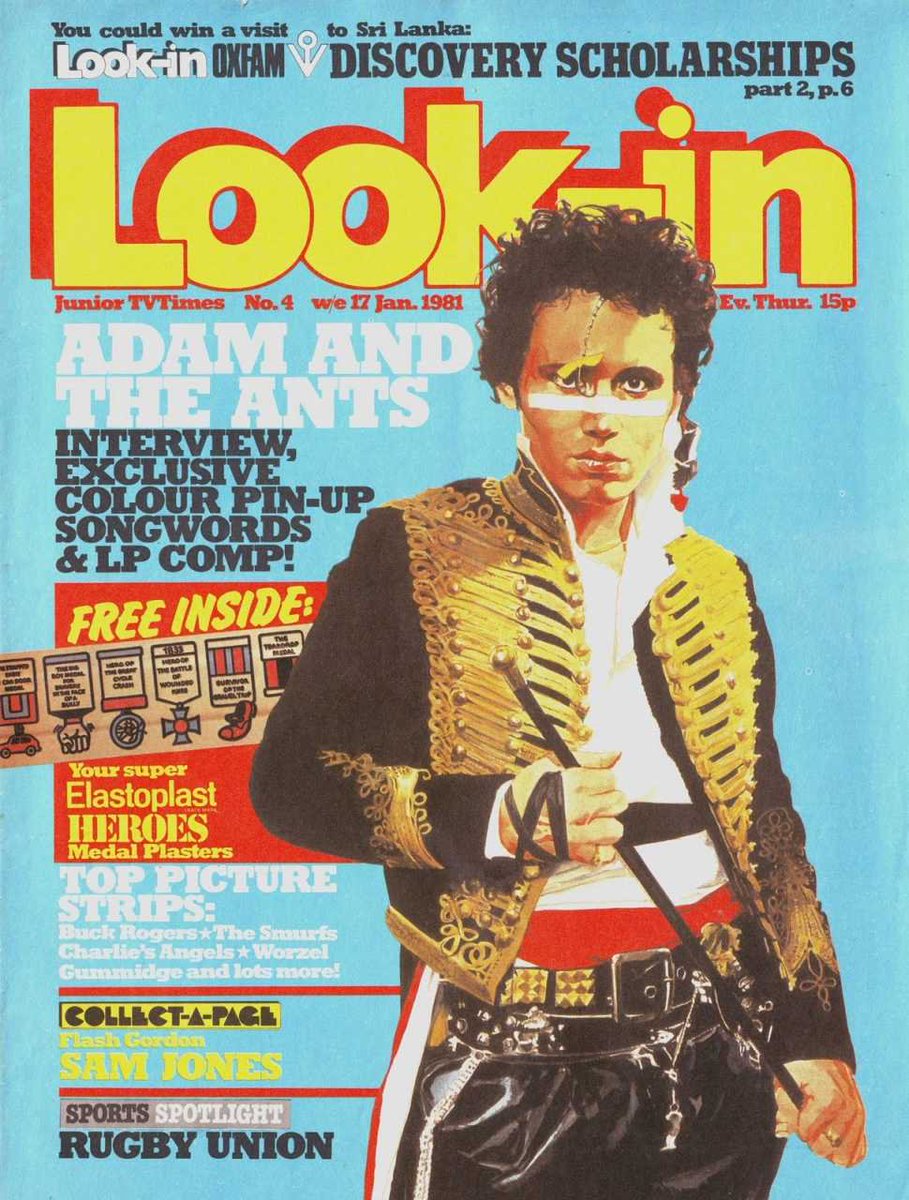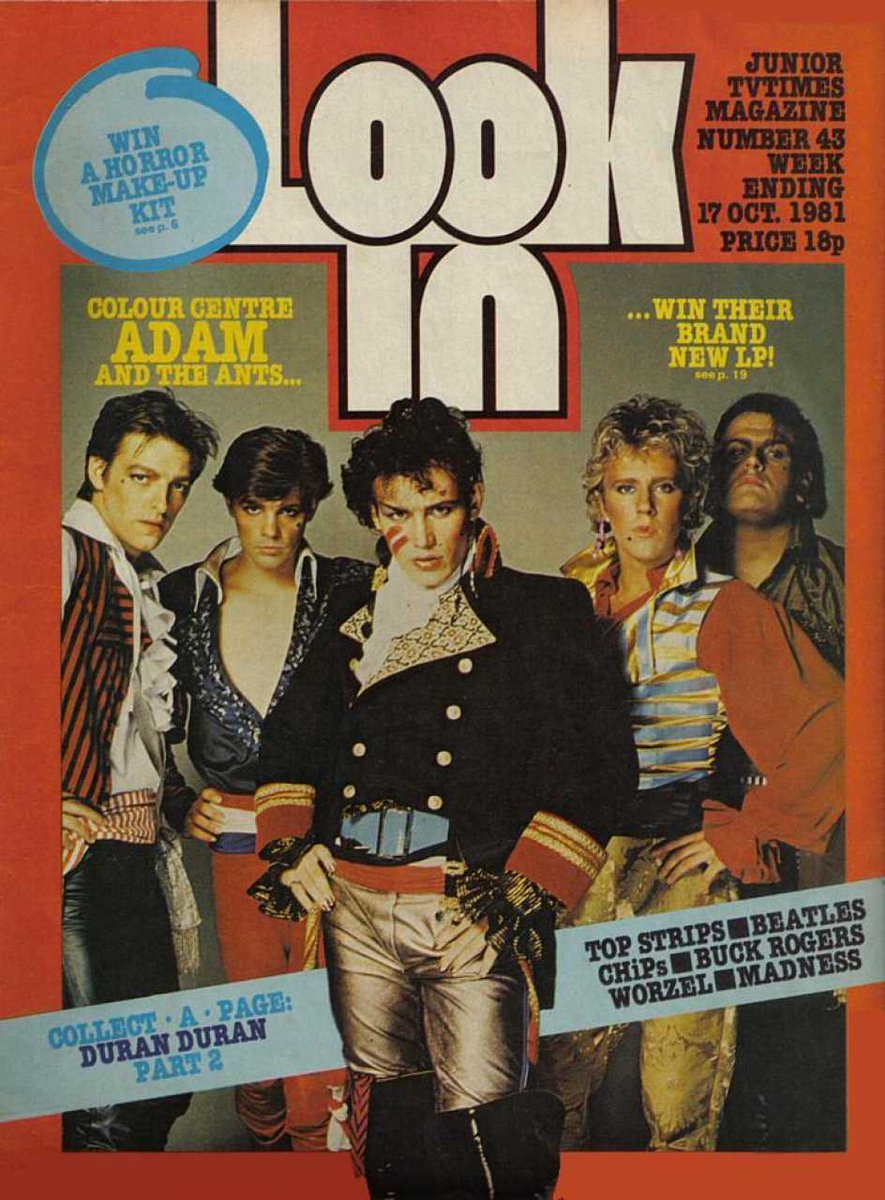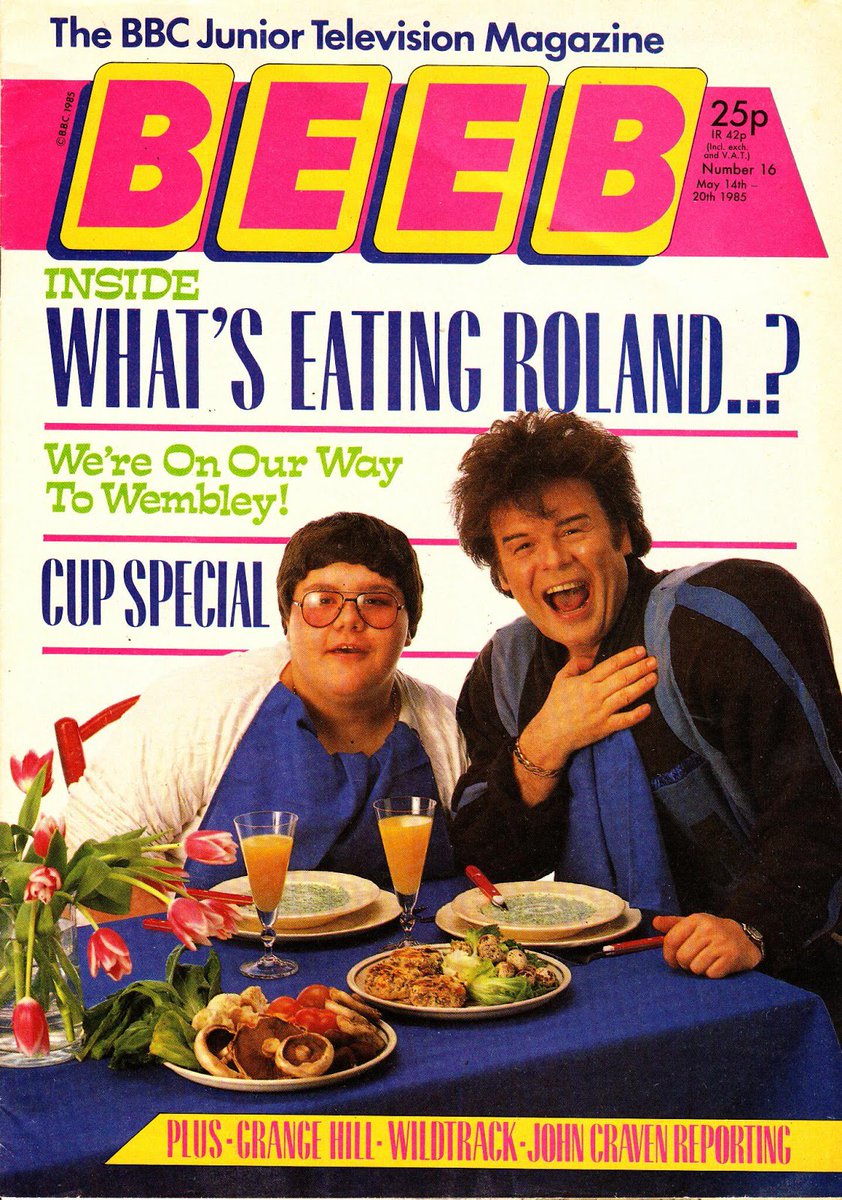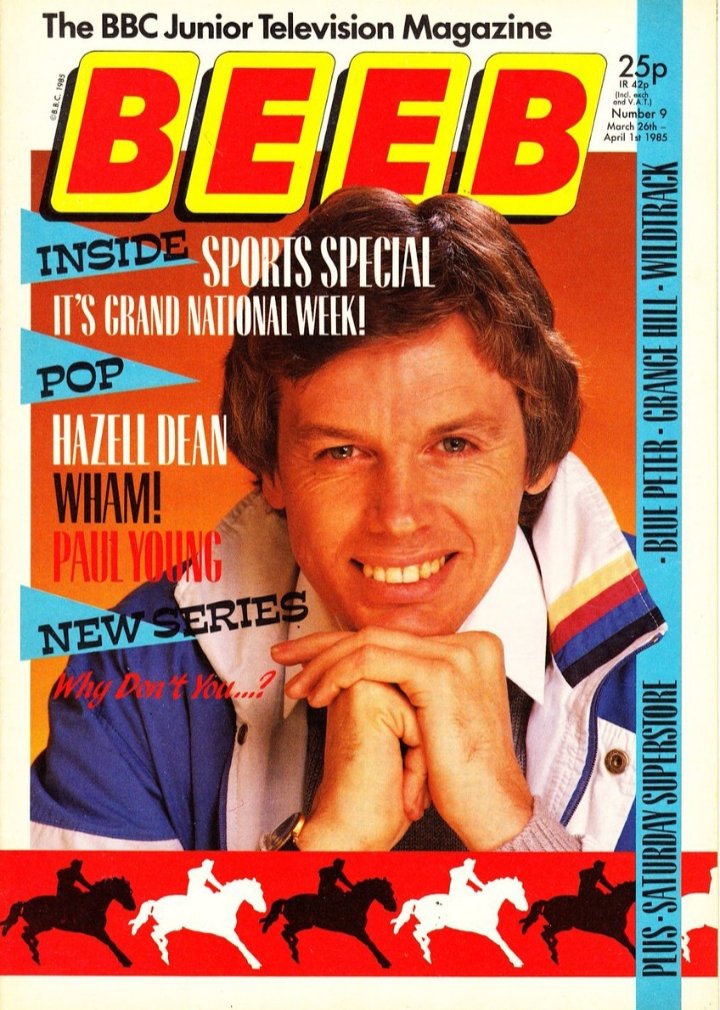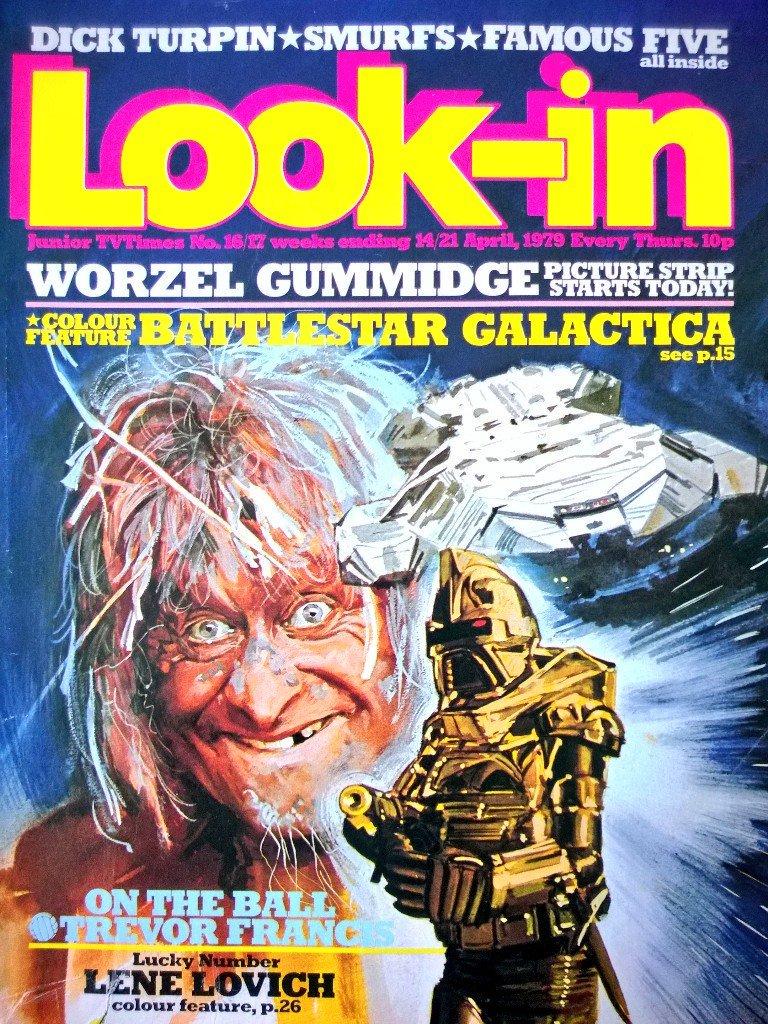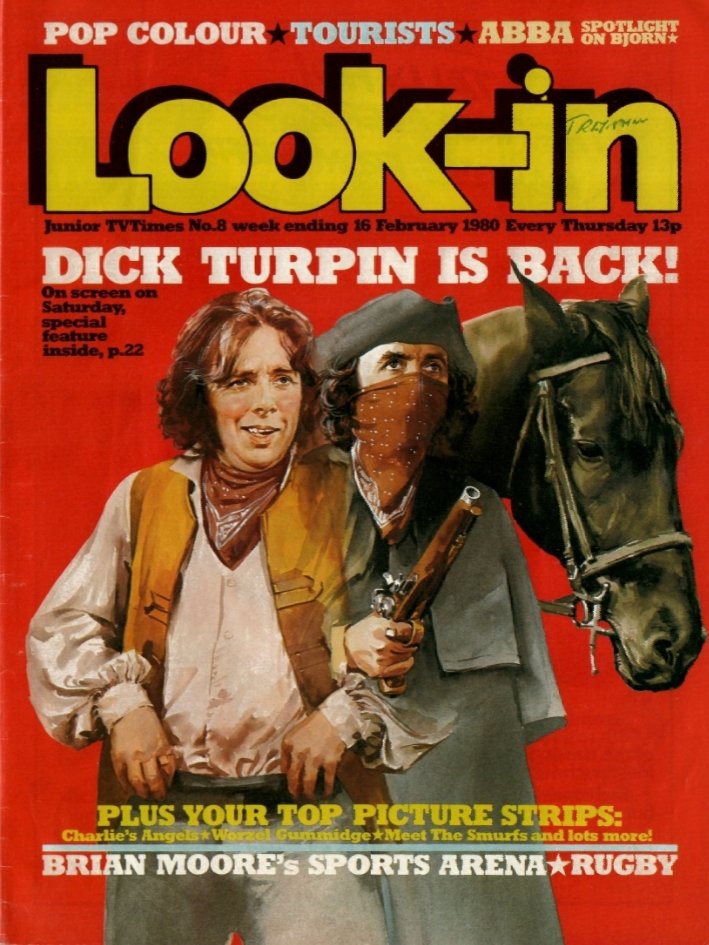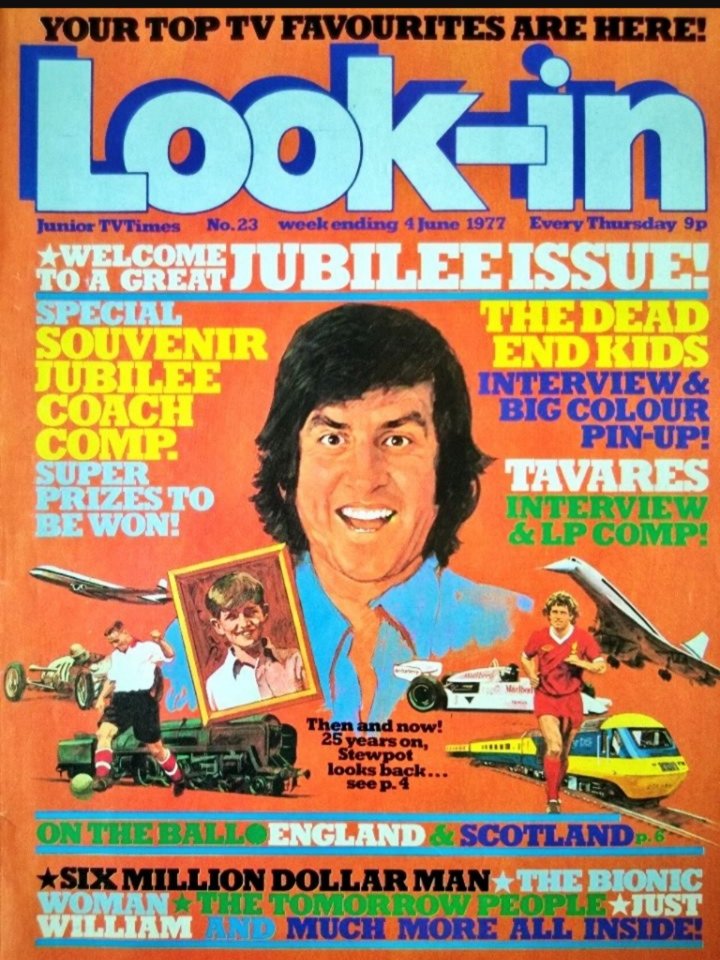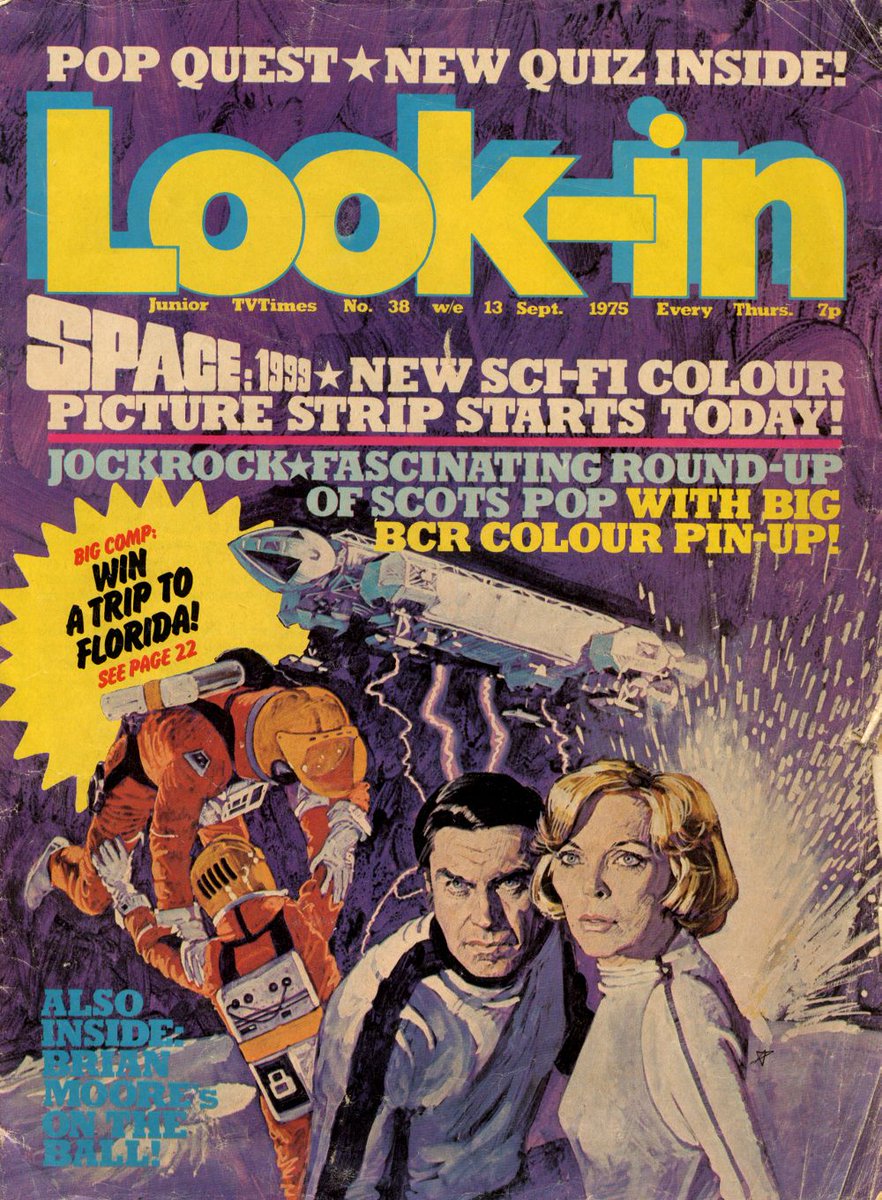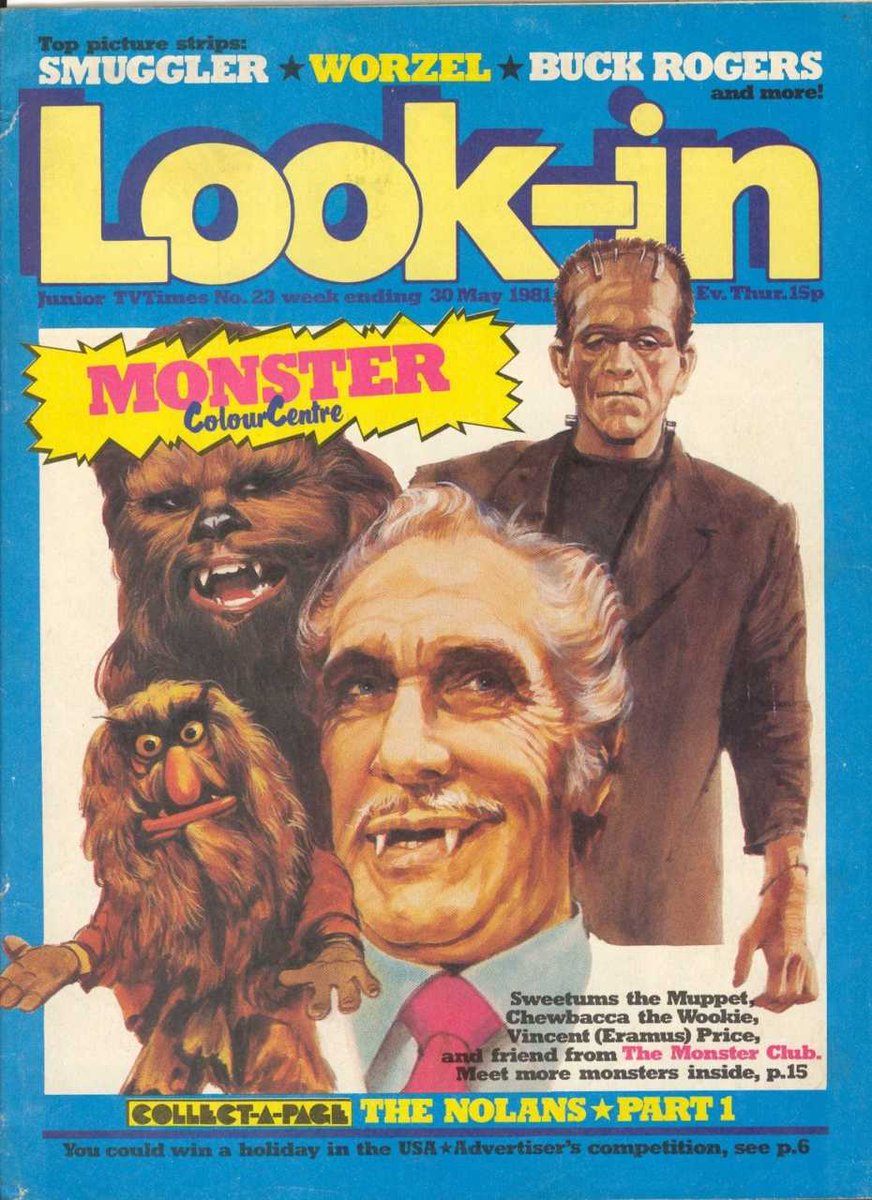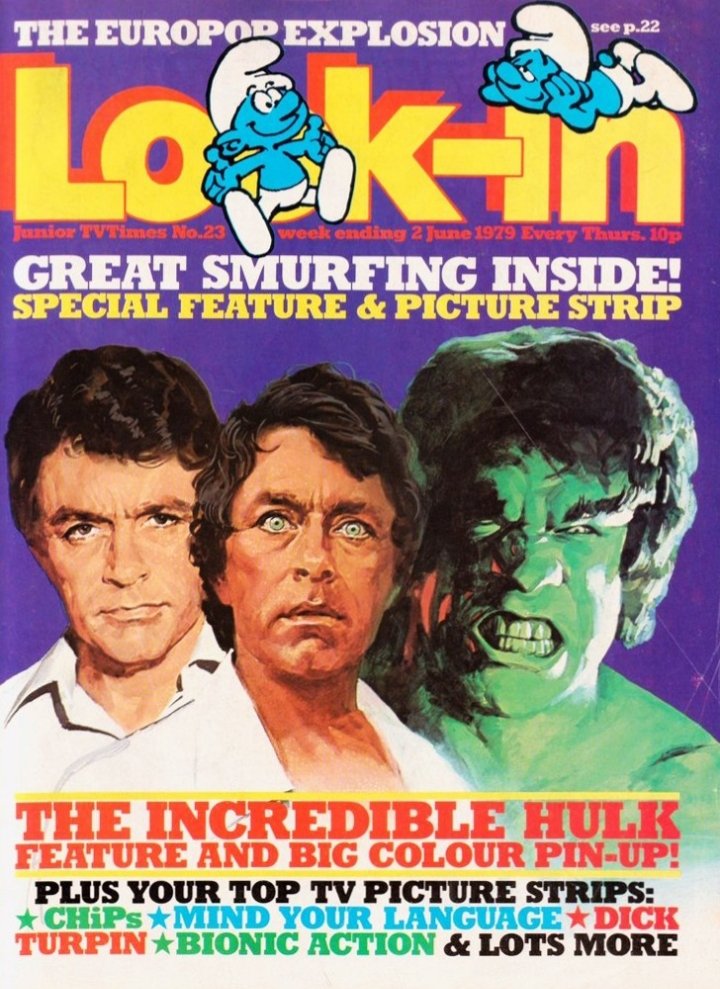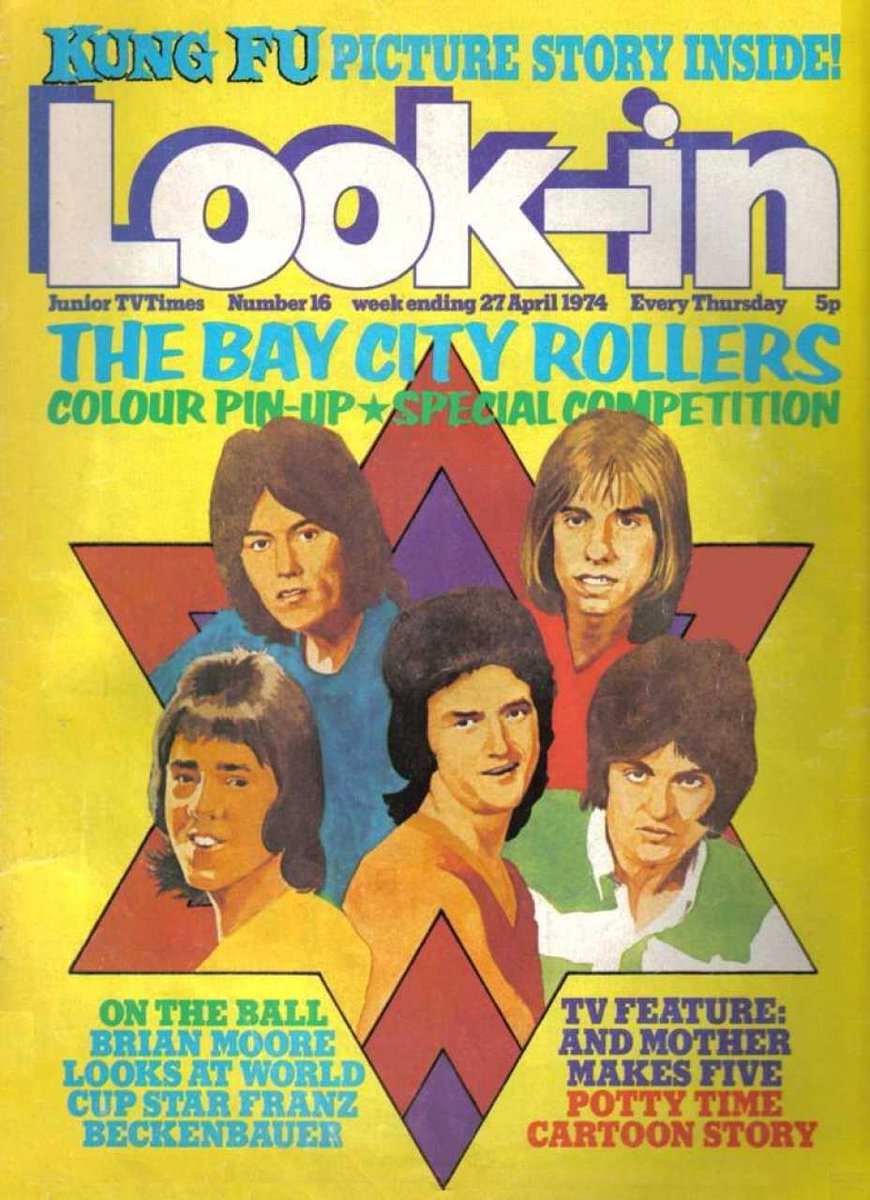Britain in the 1970s: Raleigh choppers, lumberjack jackets and Findus crispy pancakes for tea. And one magazine really summed up the spirit of '70s Britain for me...
This is the story of Look-In! #SaturdayThoughts
This is the story of Look-In! #SaturdayThoughts
Children's TV reflected the British class system: the BBC was seen as worthy, educational and safe; ITV was considered brash, vulgar and rude. Some strict parents wouldn't even let their children watch the 'commercial' channel!
However by the 1970s ITV children's programmes had really started to hit their stride. And unlike the prim BBC they weren't afraid to be subversive.
Noisy, crazy and often very funny they stated to hoover up viewers...
Noisy, crazy and often very funny they stated to hoover up viewers...
...which was a bit of a problem for British comics, who were fast losing the battle for attention as kids chose to watch TV rather than read.
So in 1970 Independent Television Publications started work on a new kids magazine, aimed squarely at a TV savvy audience. It would be a 'Junior TV Times', featuring music, sport and the stars of commercial television. Plus regional TV listings...
Alan Fennell was recruited to edit the new venture, having successfully run TV Century Comic previously. Angus Allan was brought in to work on the comic strips for the new magazine.
Look-In: the Junior TV Times launched on Friday January 8th 1971 with Magpie's Tony Bastable on the cover. Strips included Please Sir and Timeslip, along with a World of Sport special and magic tricks from David Nixon.
The Look-In format was simple but effective: TV, music, sport and celebrities. Its production values were high, and coming out on a Friday meant it was an eagerly anticipated weekend treat for young readers.
Some of the best British comic artists were hired to work on Look-In: Mike Noble, Arthur Ranson, Harry North, Jim Baikie and many more contributed strips over the years.
Look-in cover art was normally done by Arnaldo Putzu, who had made his name in cinema poster design. Having a strong painted cover made the magazine really stand out on the newsagent's shelves.
Pop stars regularly featured on the Look-In cover. Pop magazines like Smash Hits had yet to launch so Look-in had the pre-teen music market pretty much to itself for many years.
Most of the Look-In comic strips were based on ITV shows. From On The Buses to Sapphire and Steel anything that was ITV family viewing ended up in the magazine in some format.
Some later strips were frankly bizarre however. Here's Bucks Fizz fighting the Mafia, and Madness in space.
Look-In was also useful for plugging new TV shows that might struggle to get a younger audience. It's fair to say ITV weren't shy about using the magazine to drum up viewers. The TV listings page also encouraged readers to tune in to ITV, regardless of what their parents thought.
1981 saw a new look for Look-In, with a new logo and photo covers. Alas it wasn't enough to slow the decline in sales; by the mid 1980s rival magazines and the home computer revolution was starting to steal Look-In's lunch money.
In 1985 the BBC tried to launch a rival magazine to Look-In, but it didn't really work. The market was saturated and declining.
Look-In ceased production in 1994 after a 23 year run - impressive for any magazine. It brought high production values and glamour to kids magazines and kept people reading. And as a history of 1970s Britain it's still a fascinating read!
So look out for Look-In next time you're in a charity shop or second hand bookstore. You never know what's in it! Probably some Smurfs...
"La-la-la-la-la Look-Innnn..."
"La-la-la-la-la Look-Innnn..."

 Read on Twitter
Read on Twitter